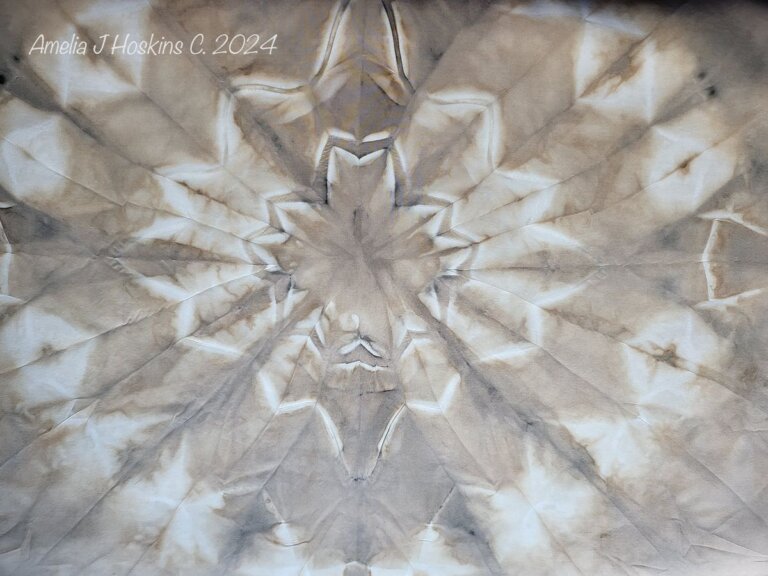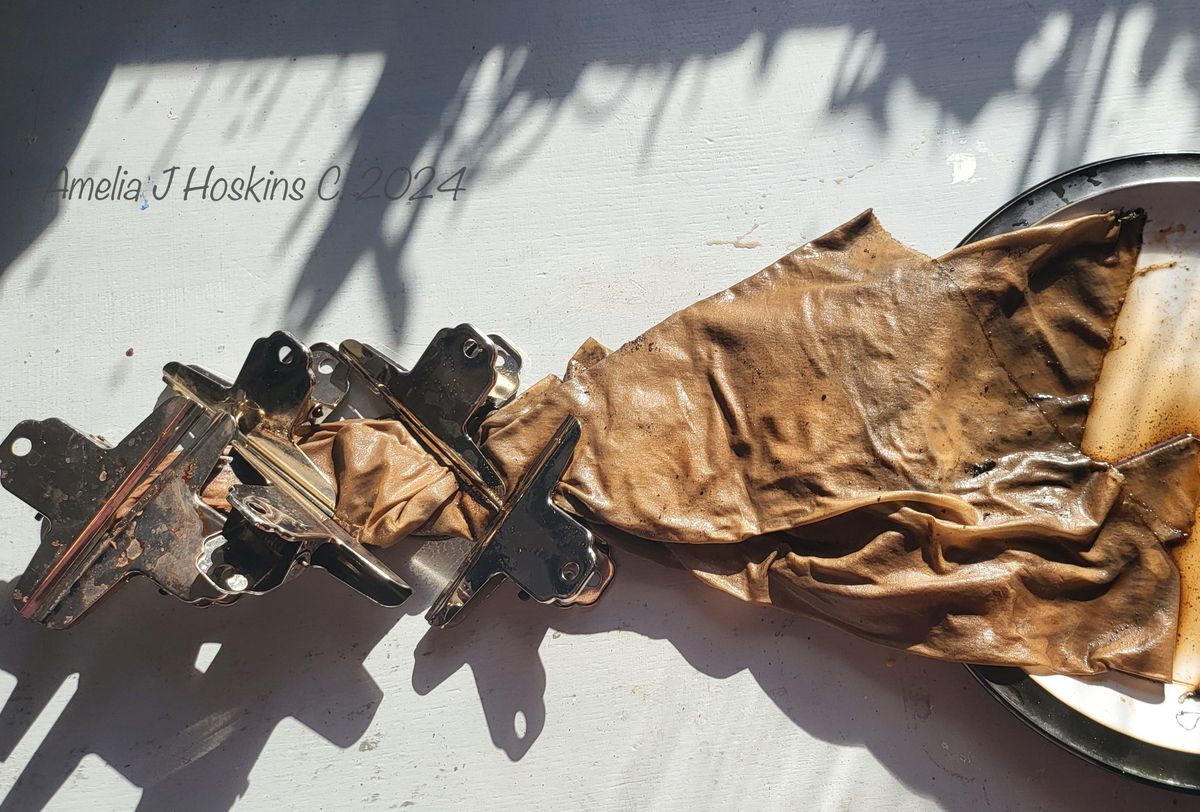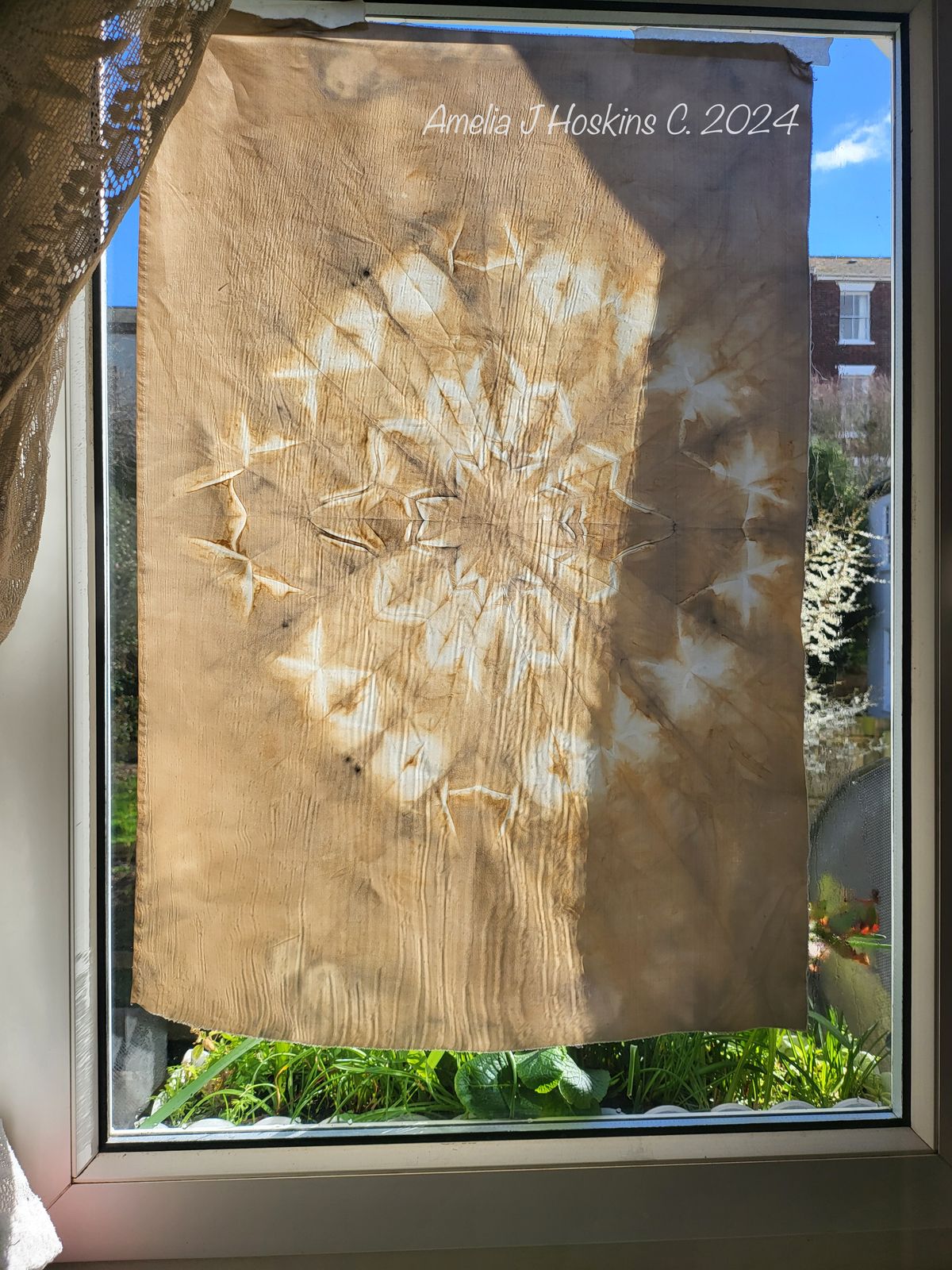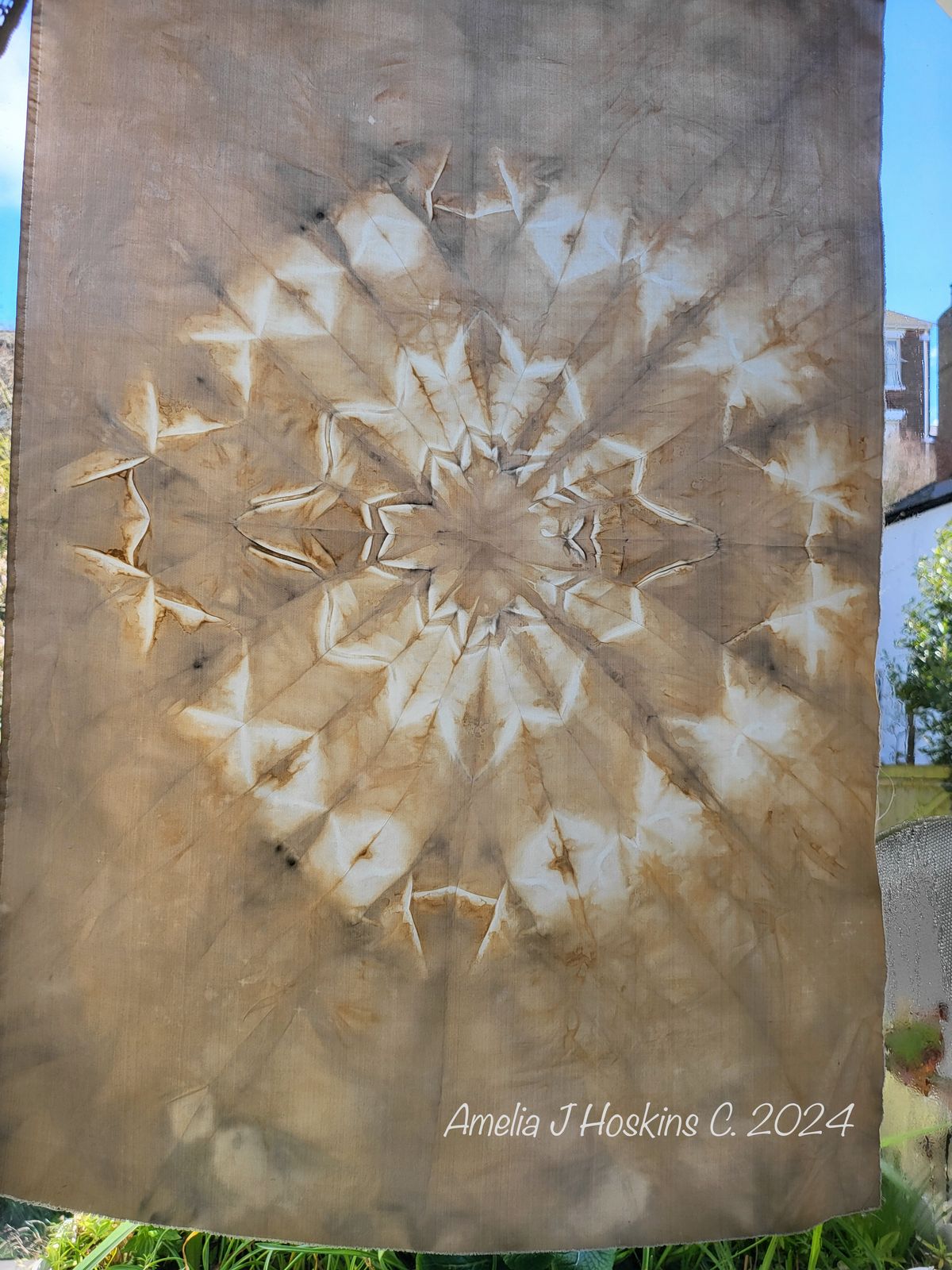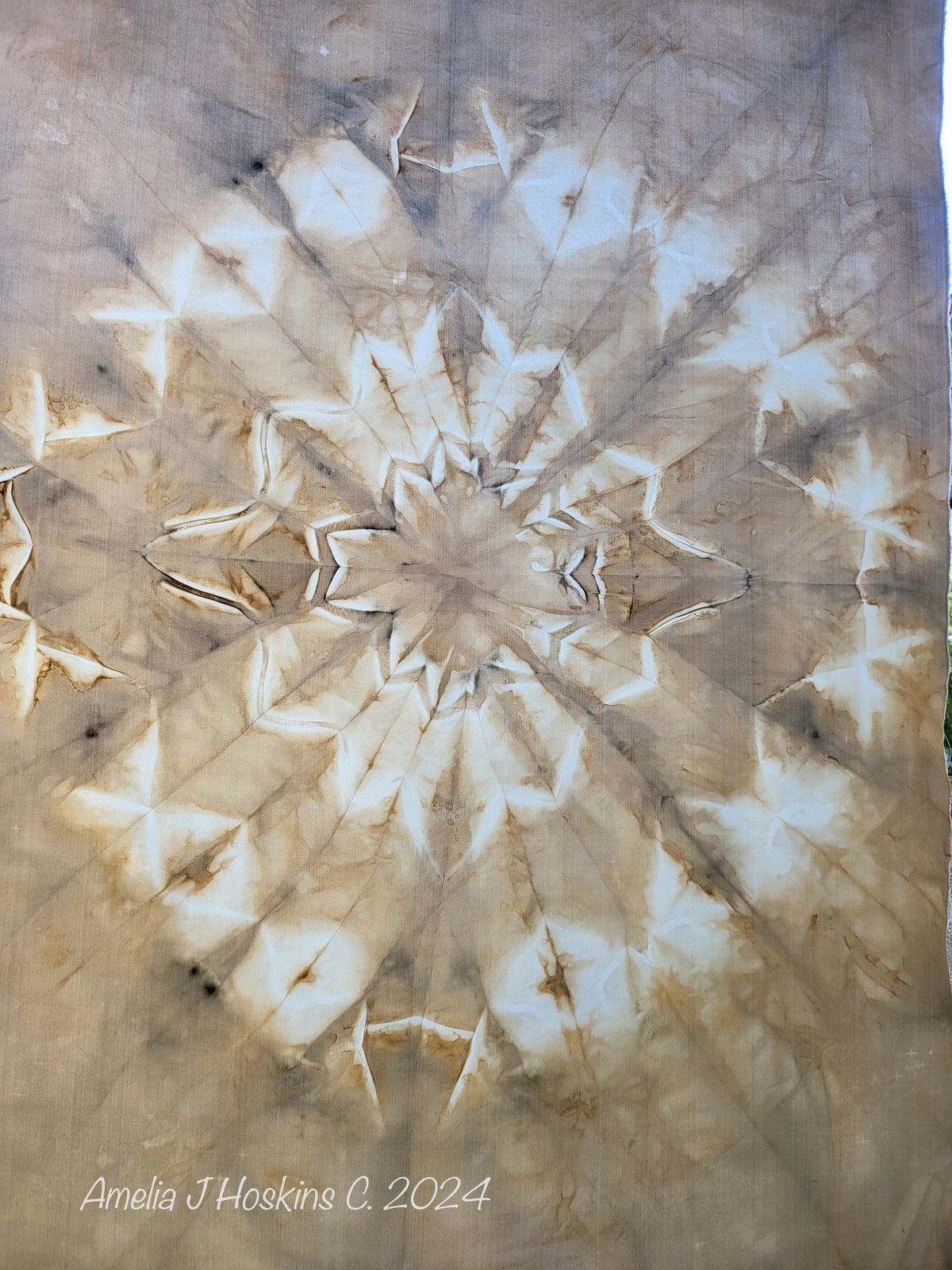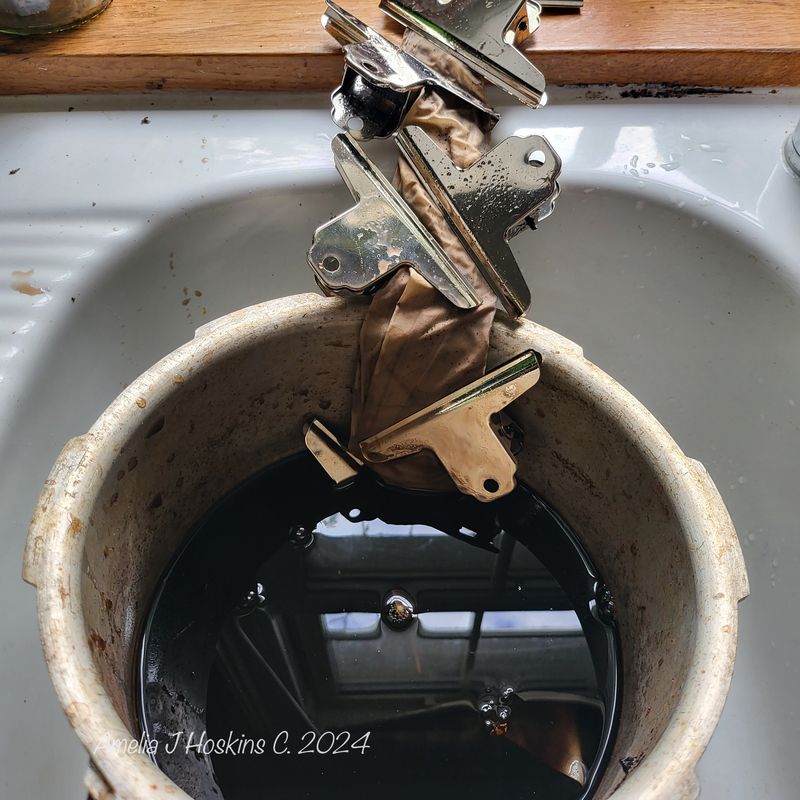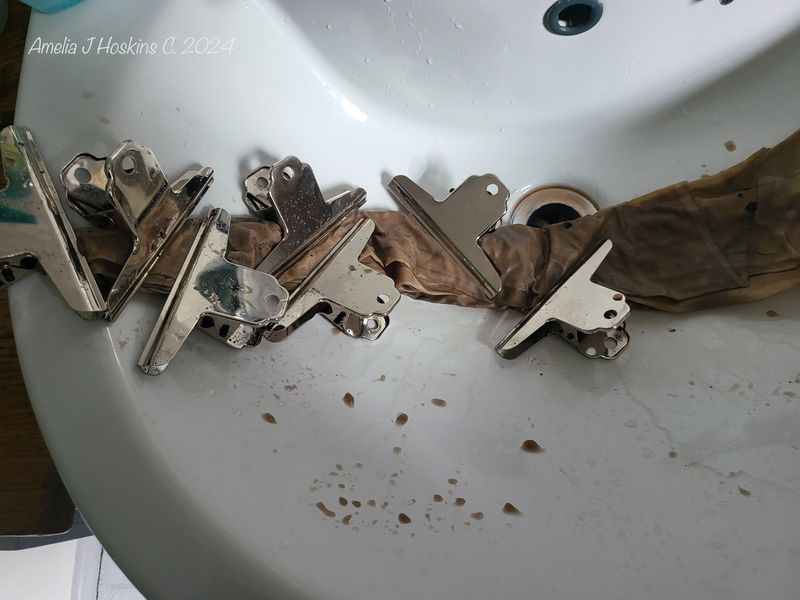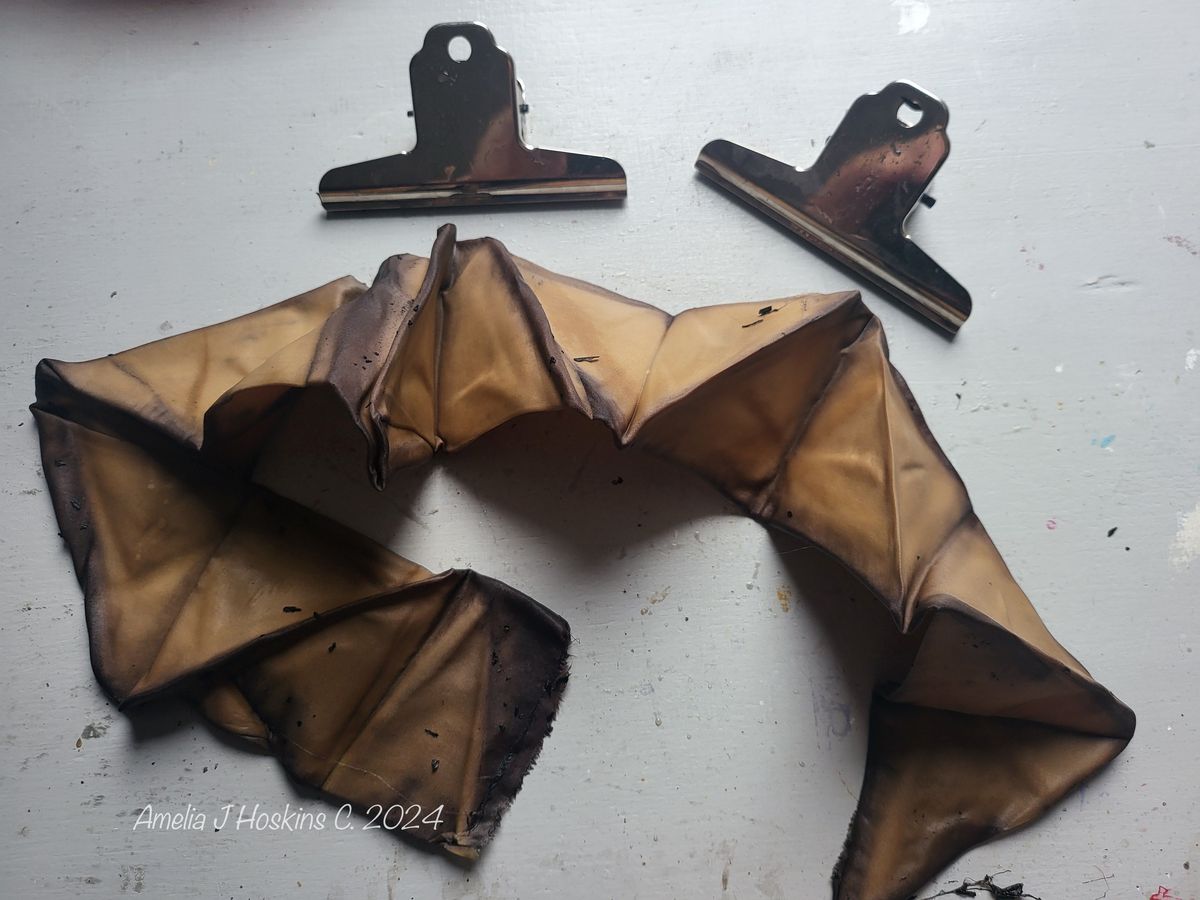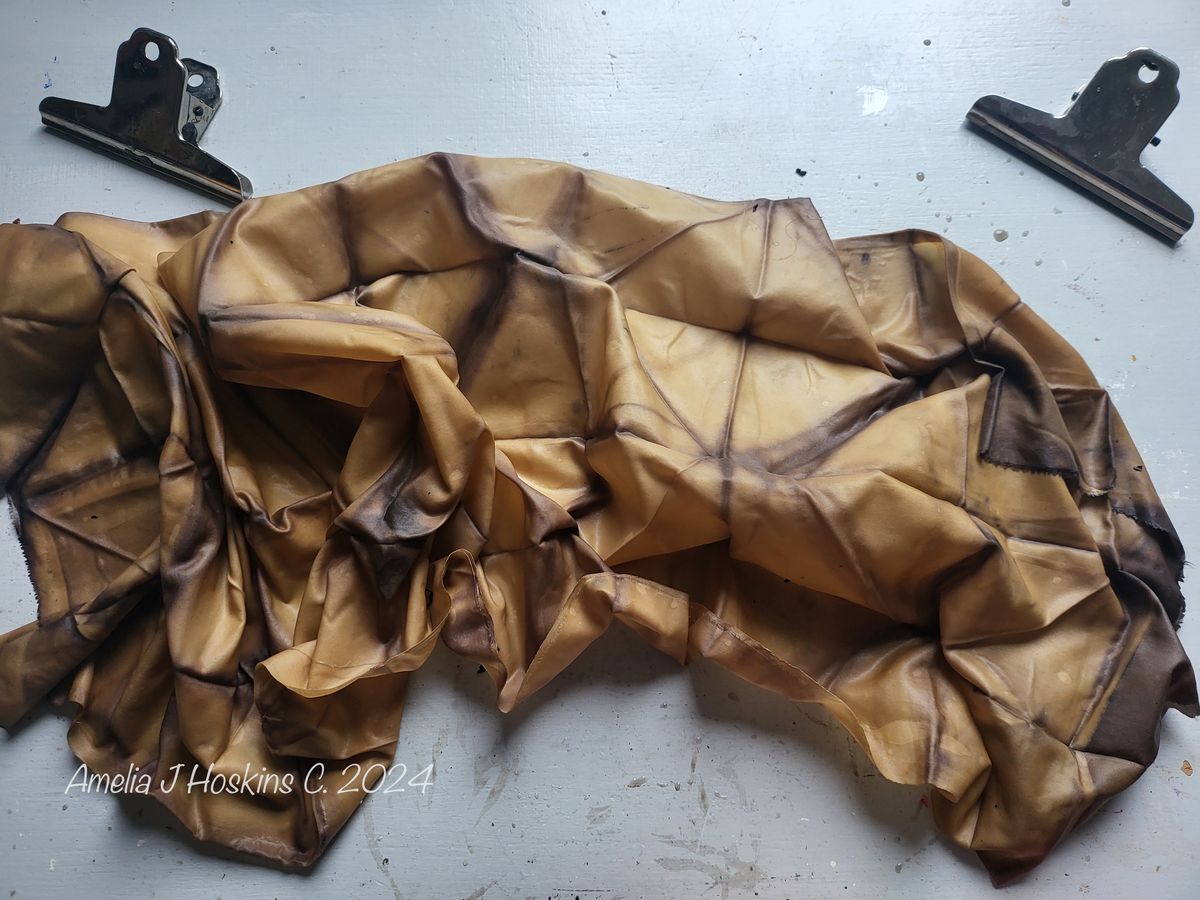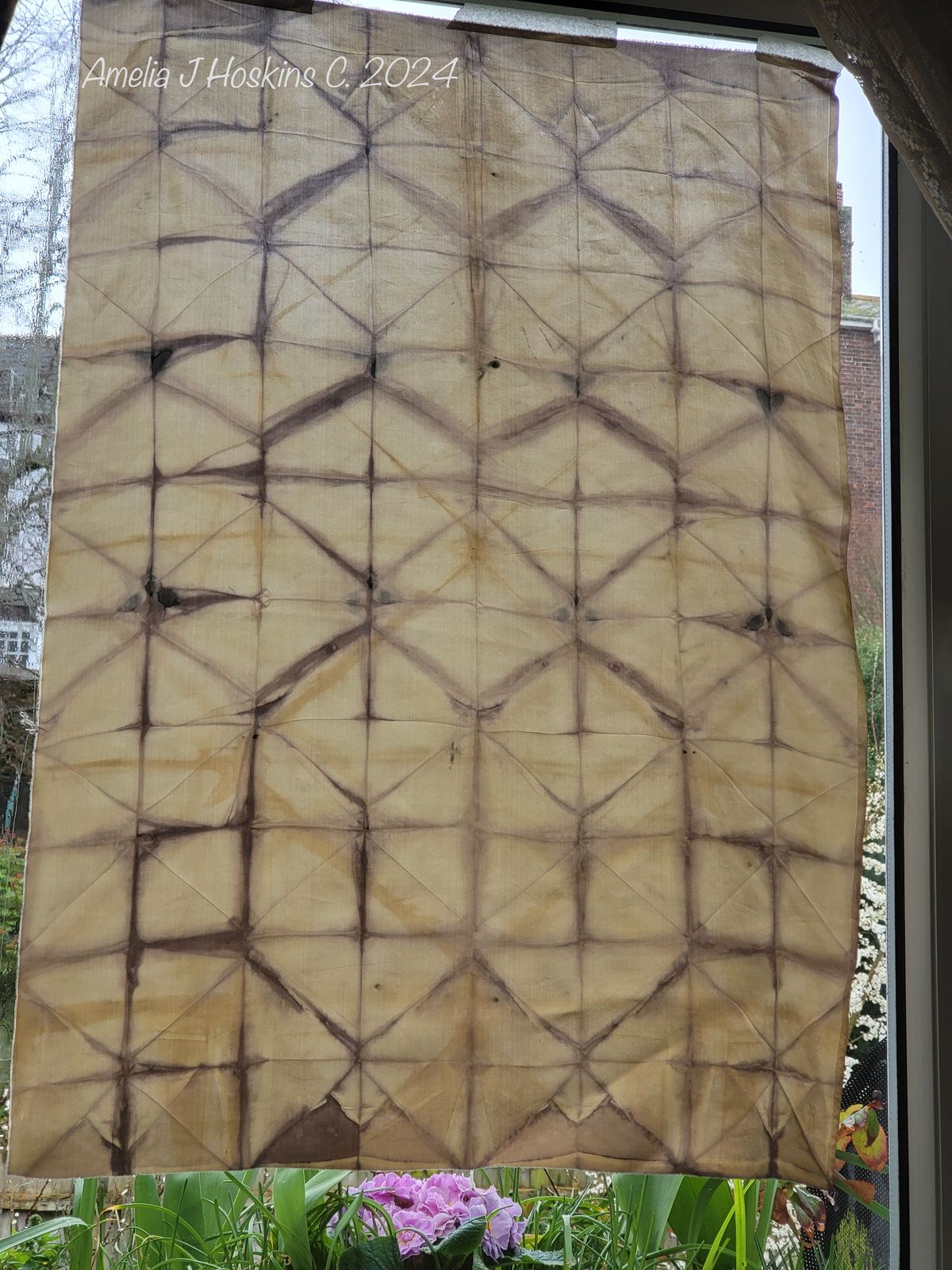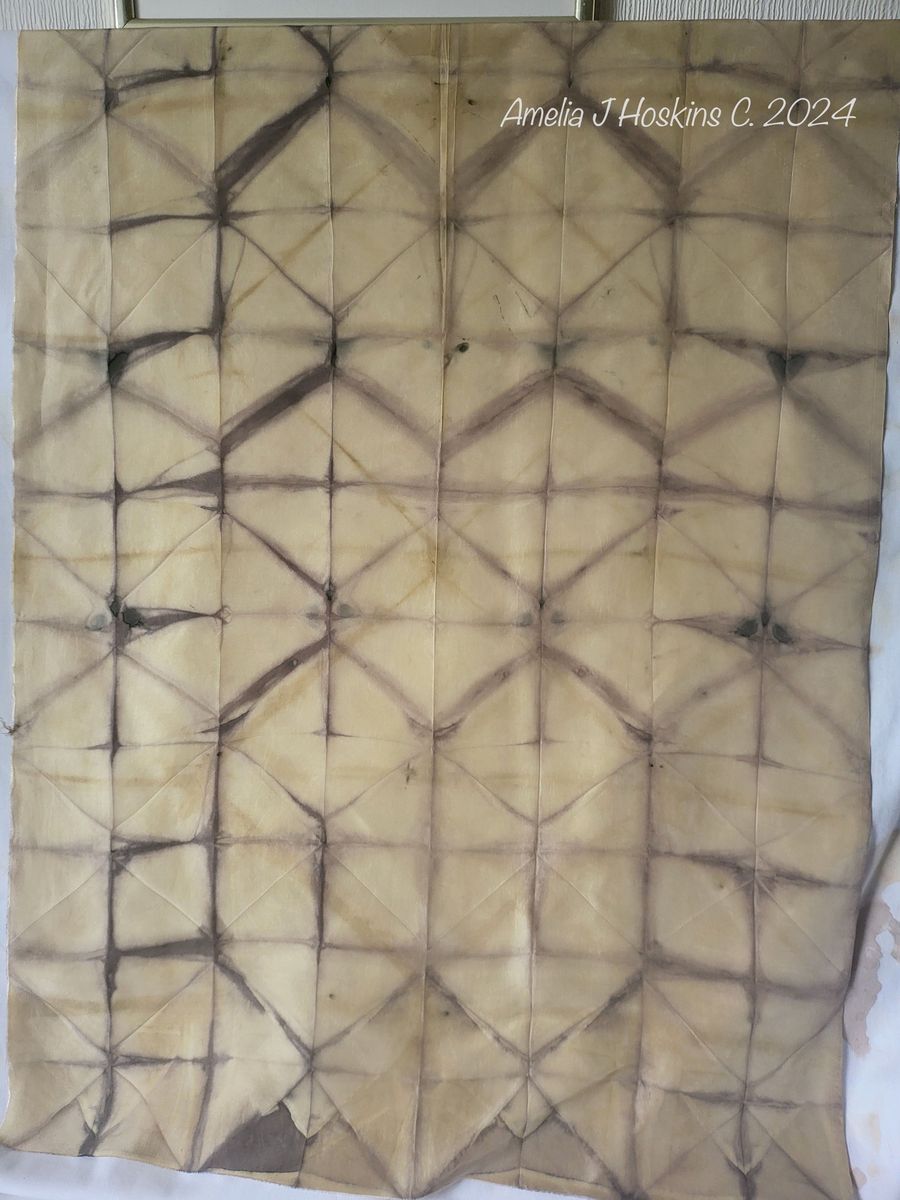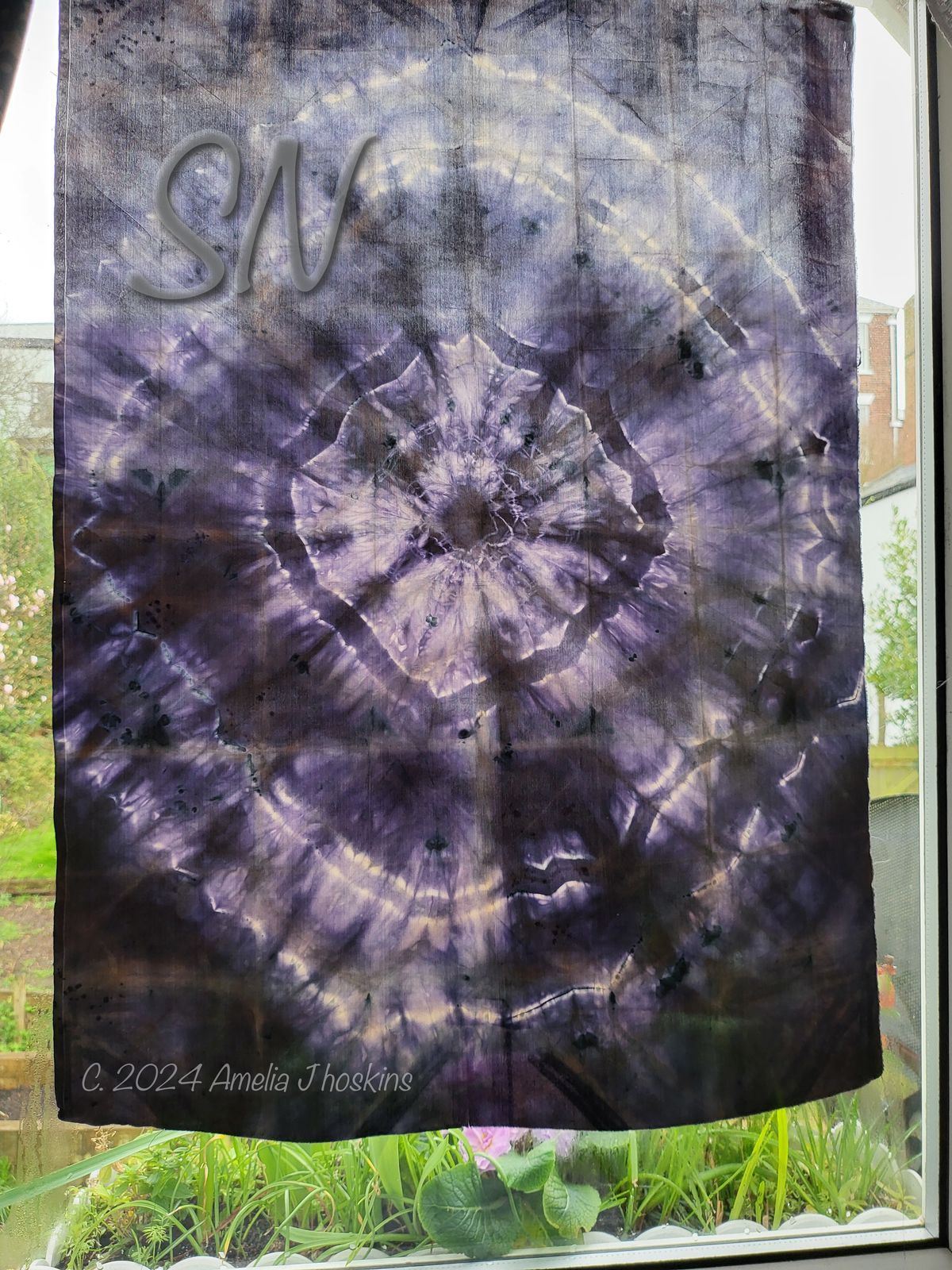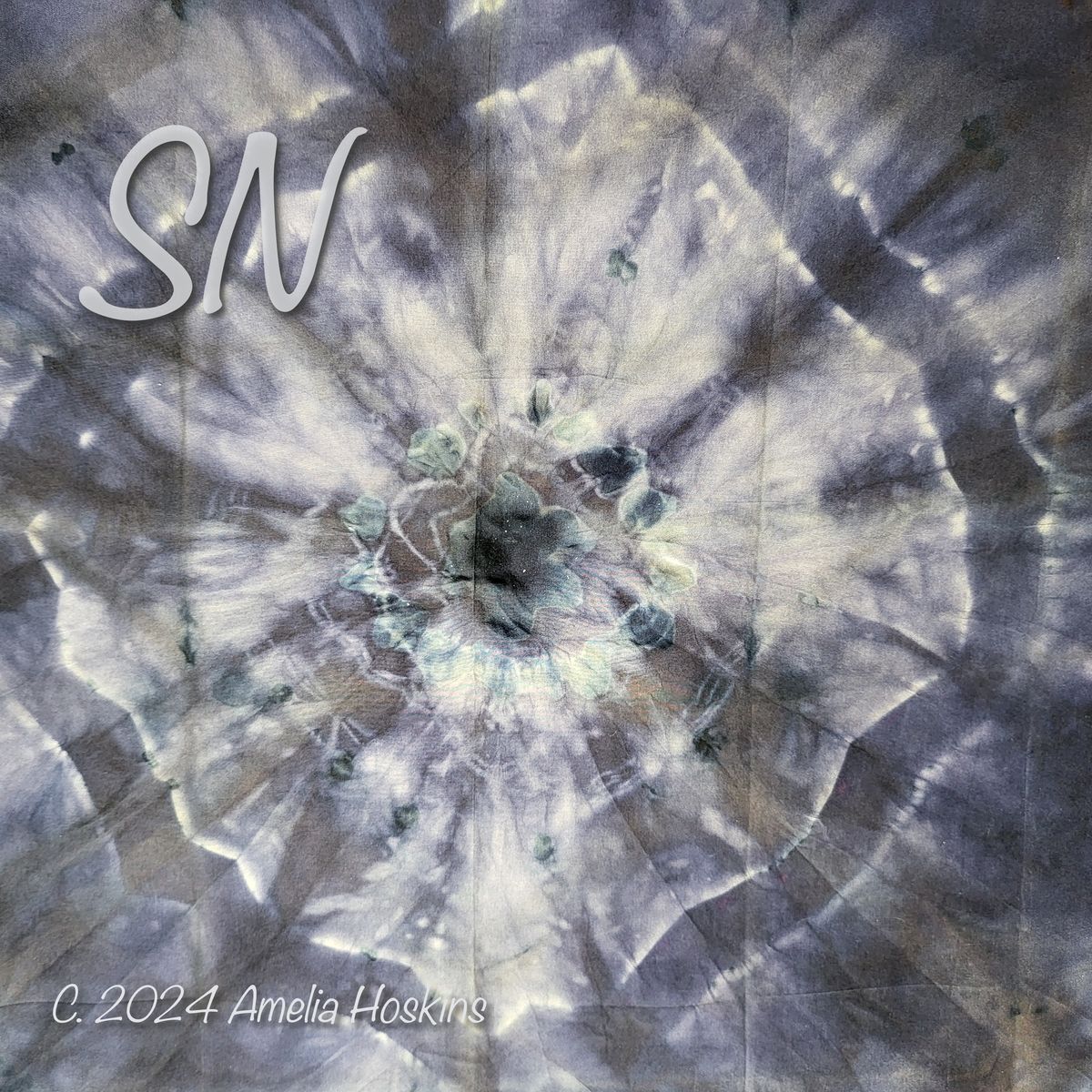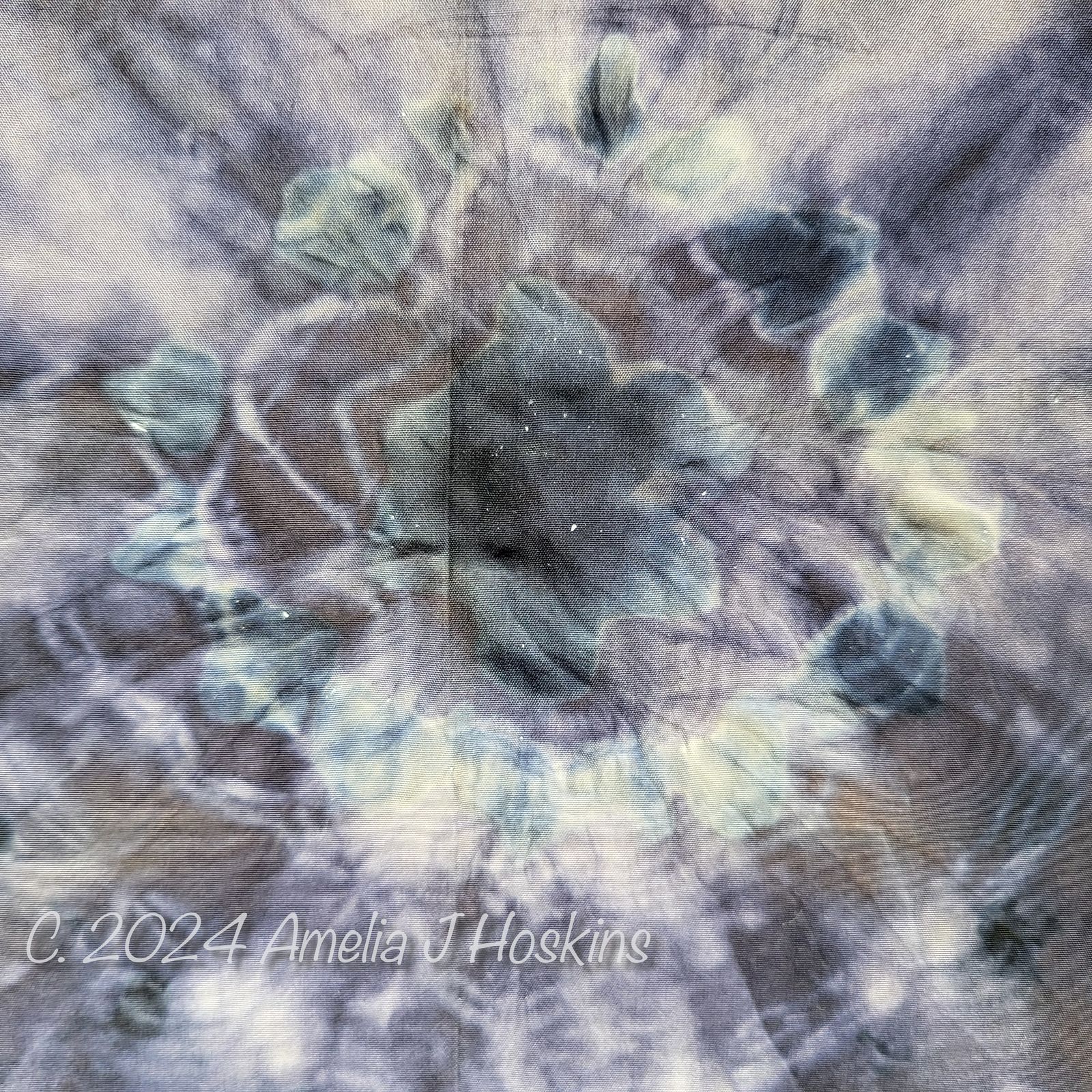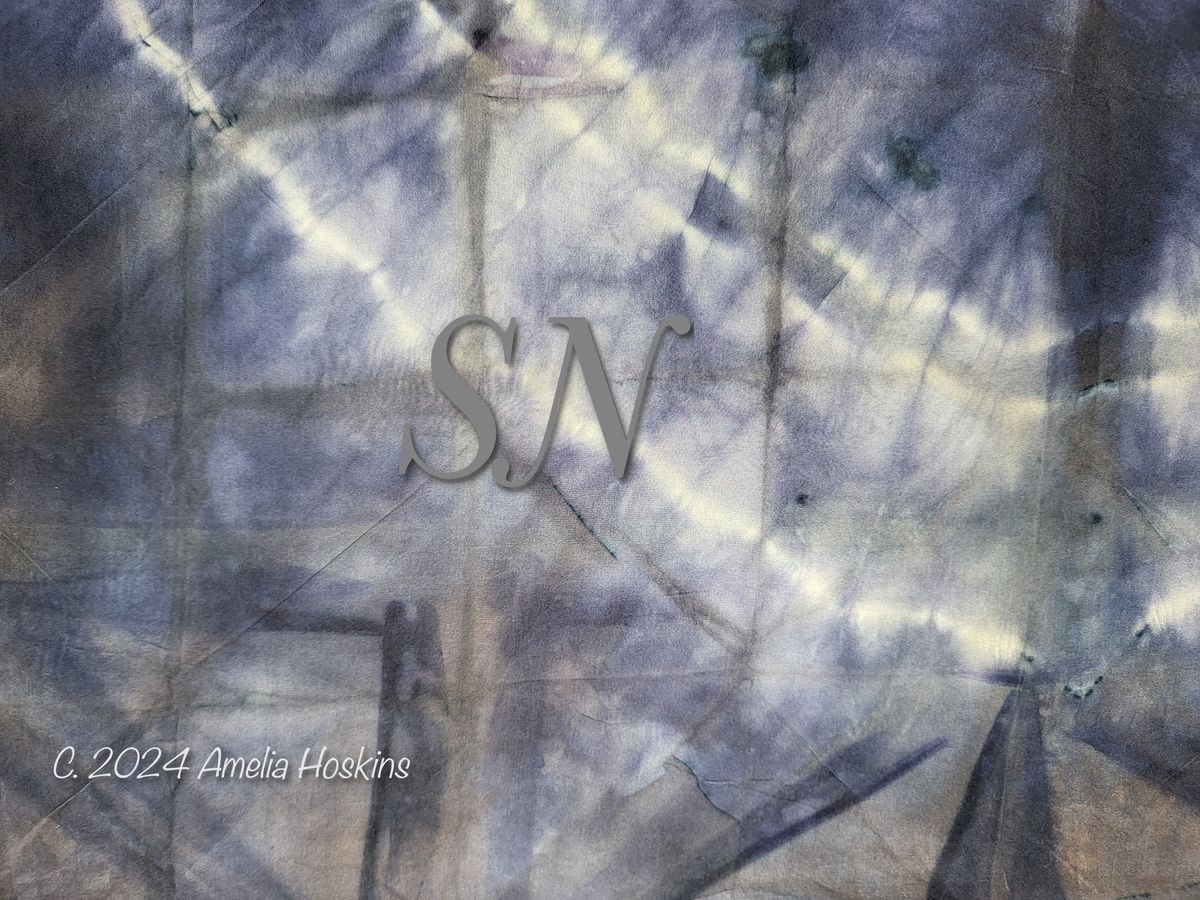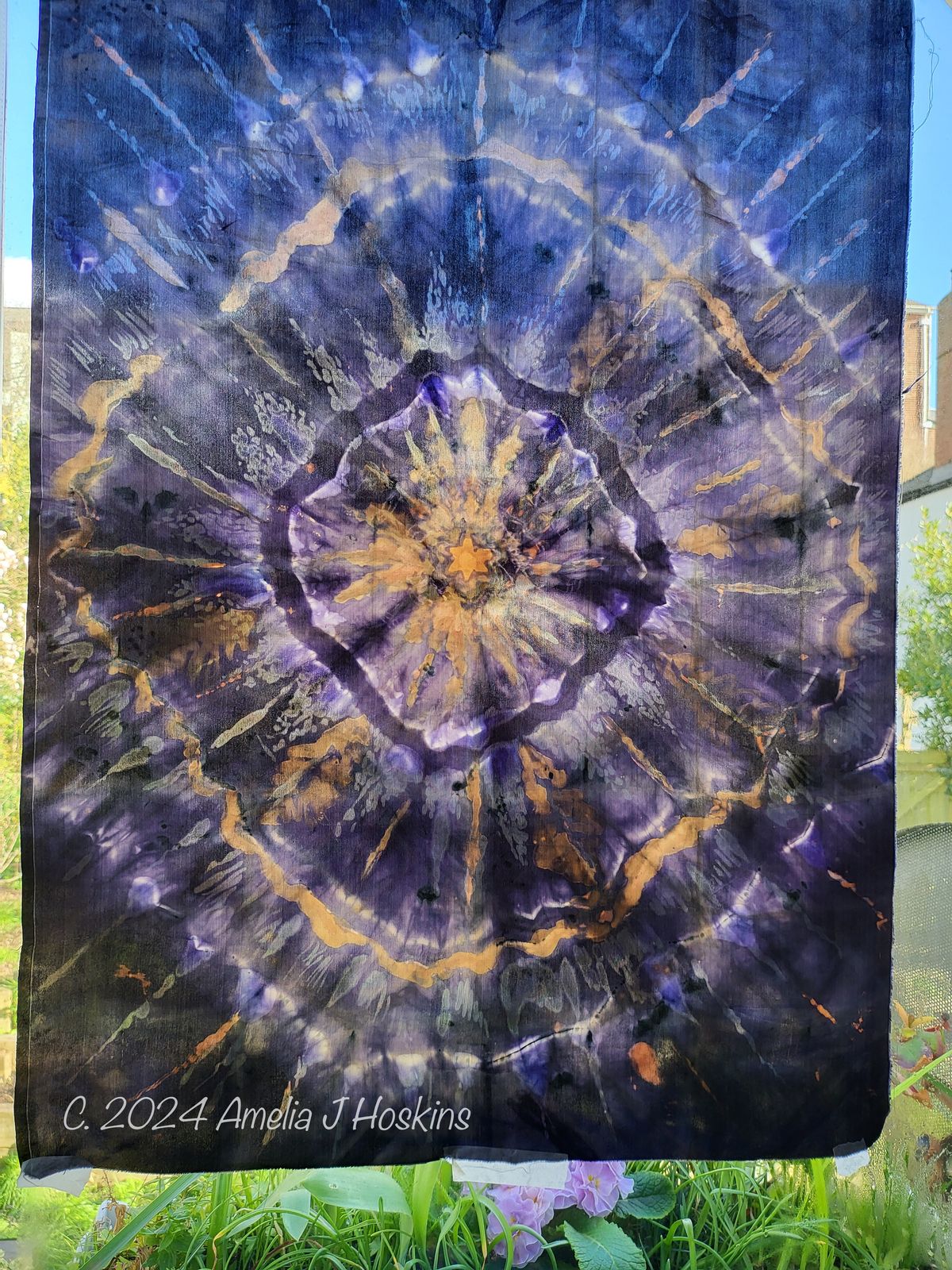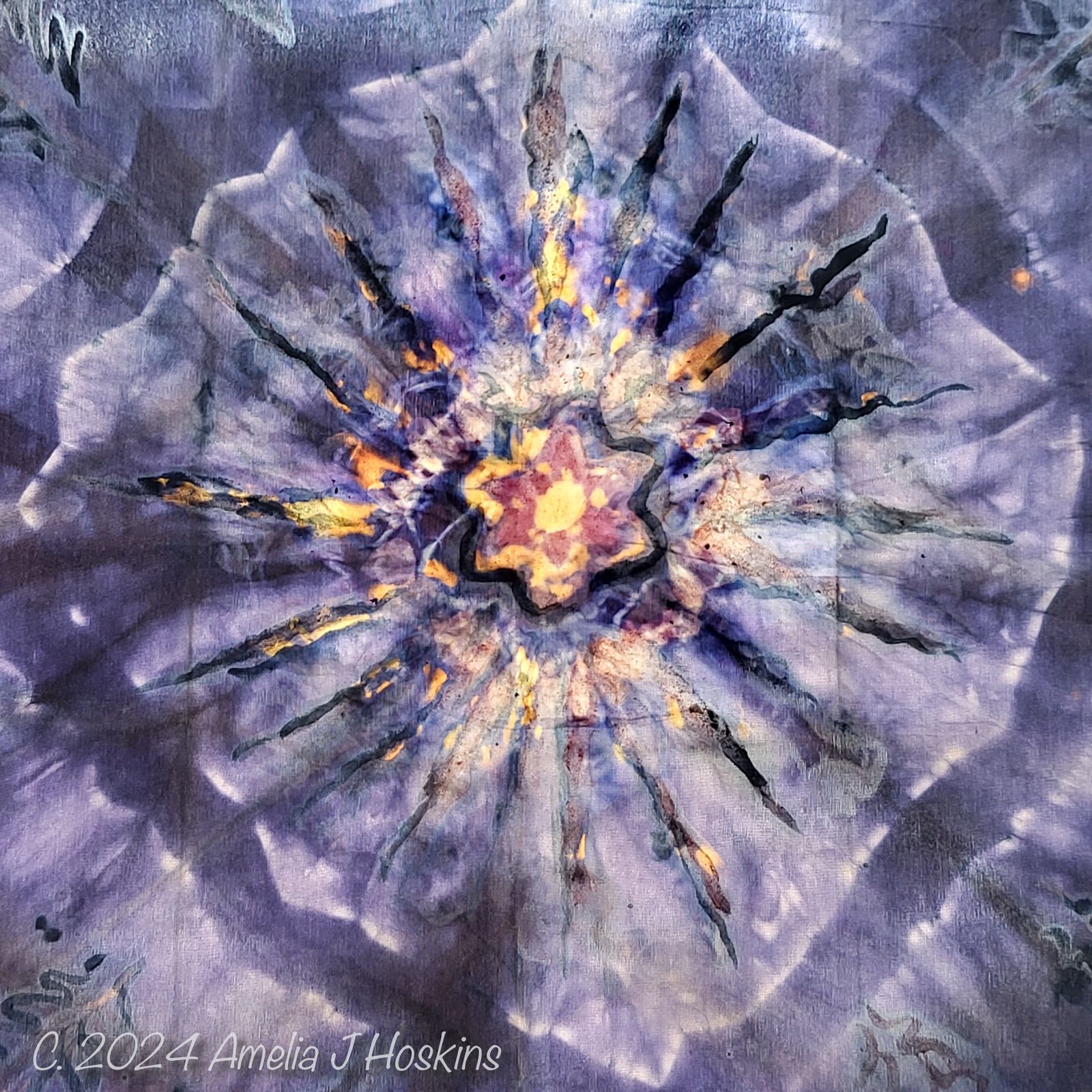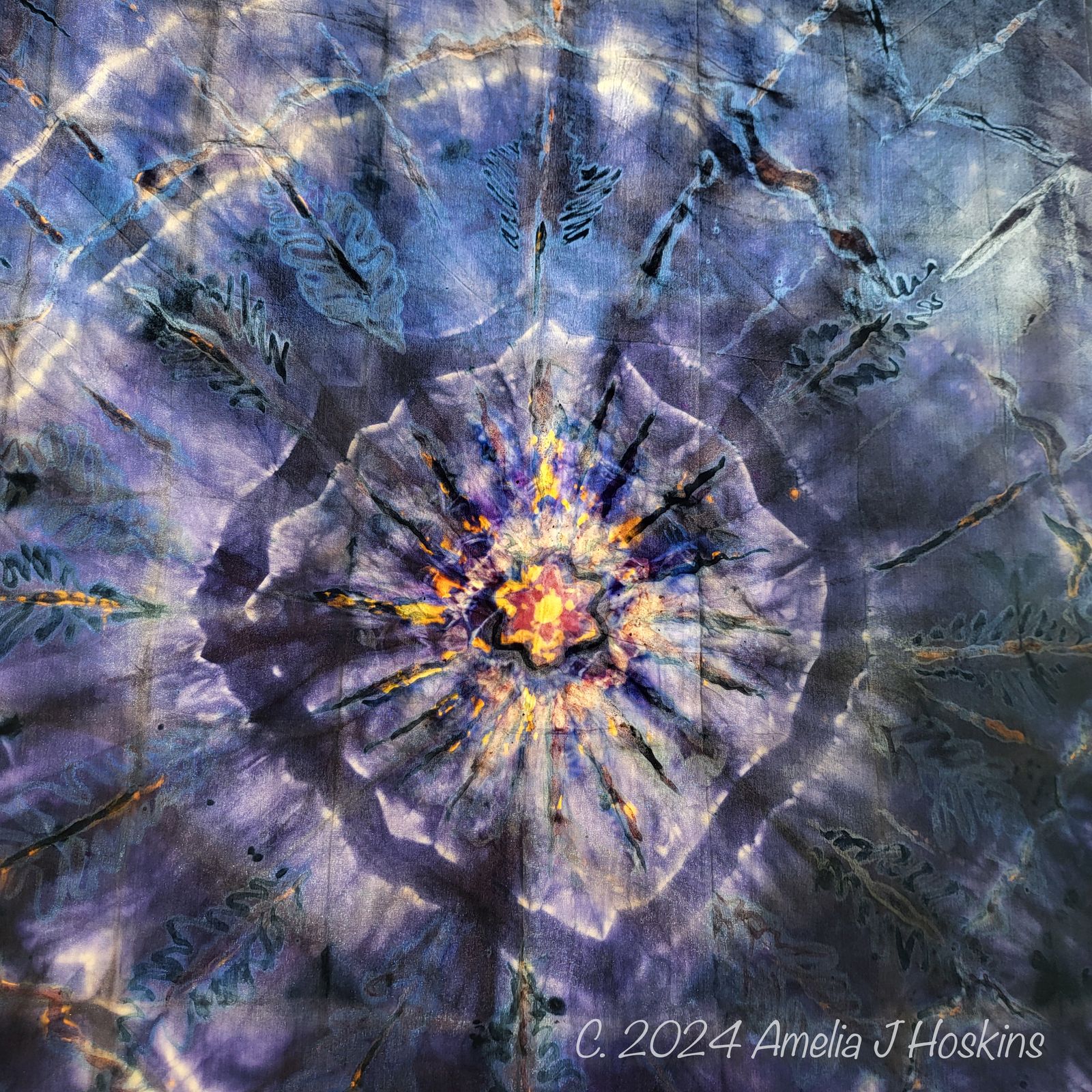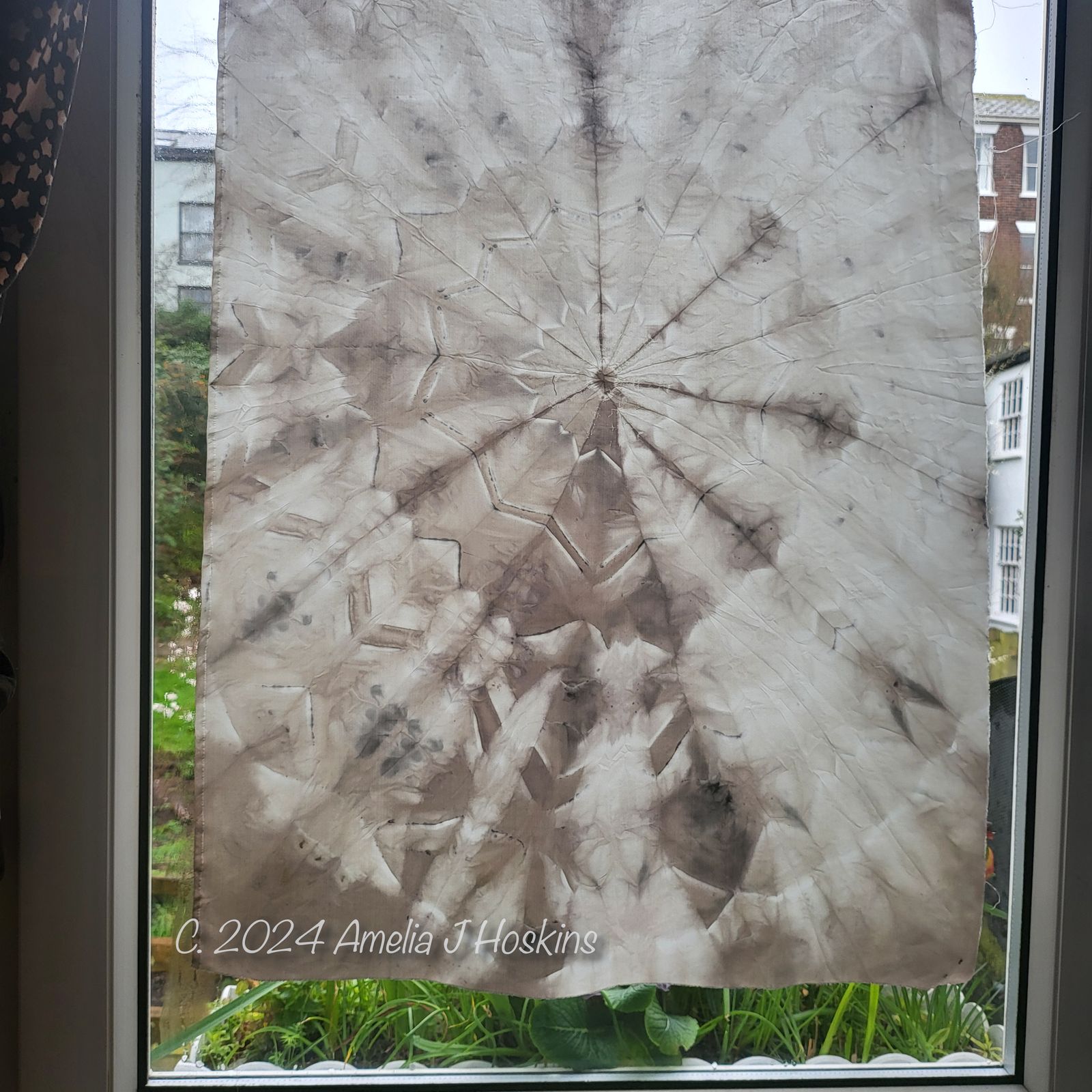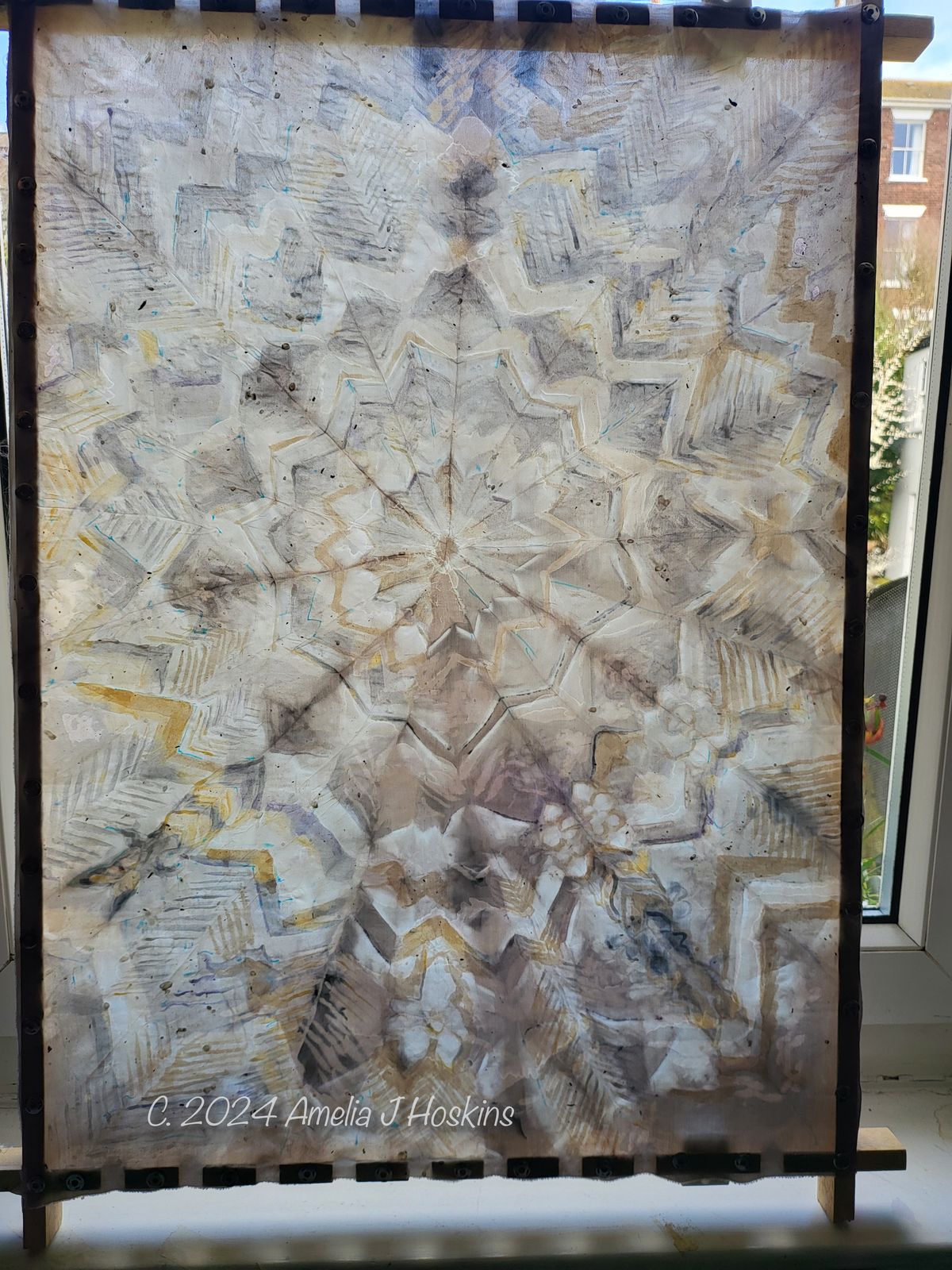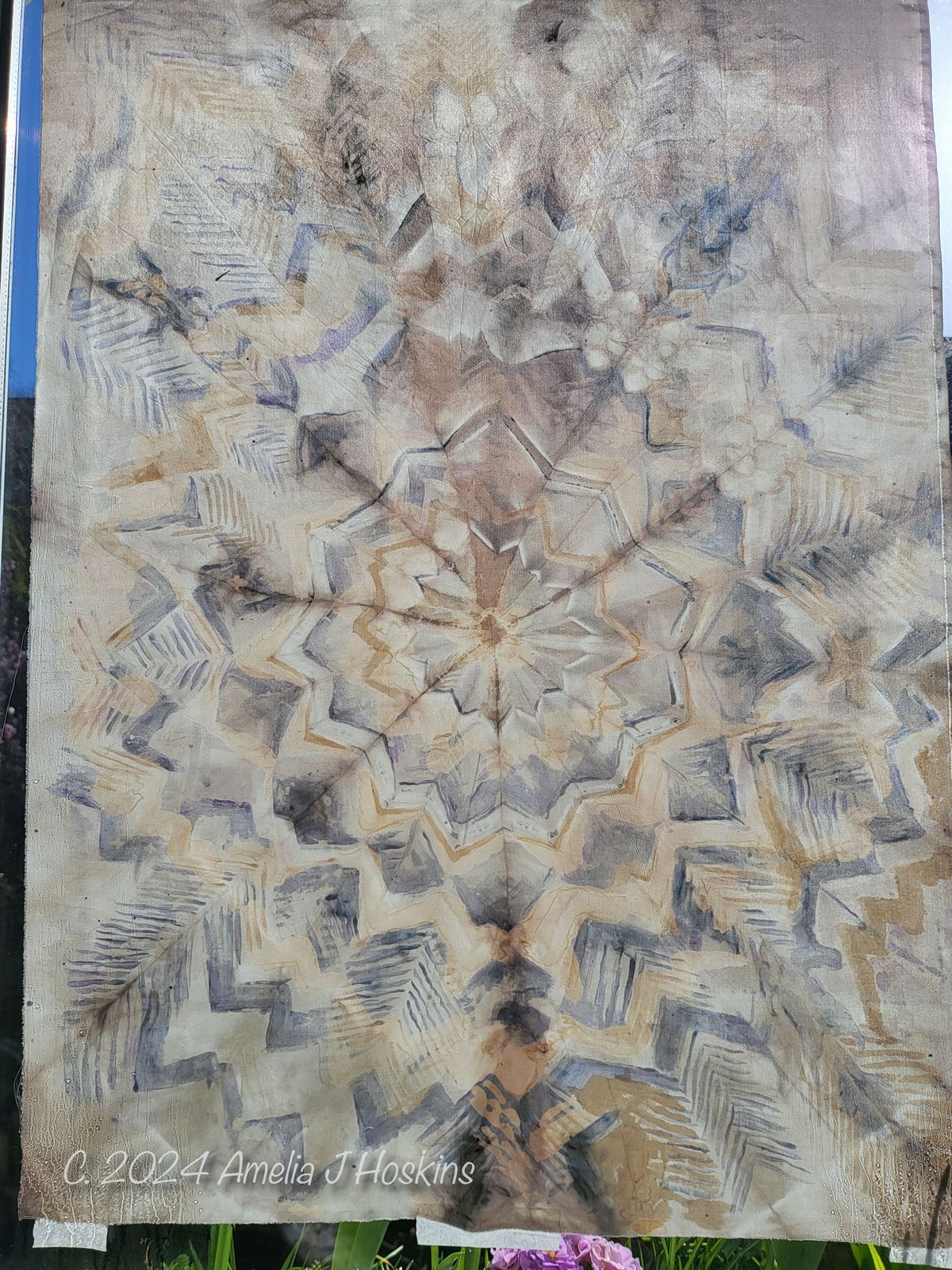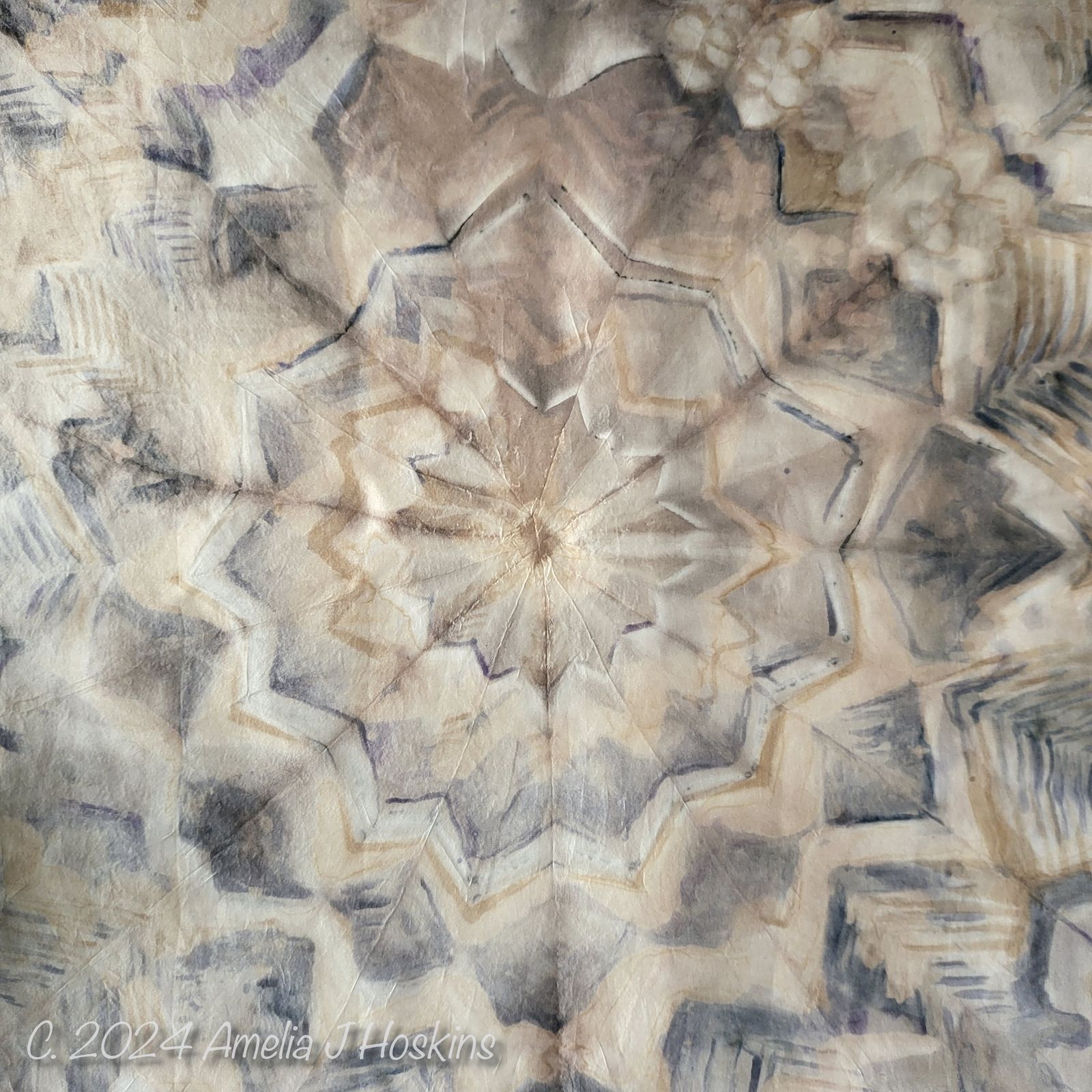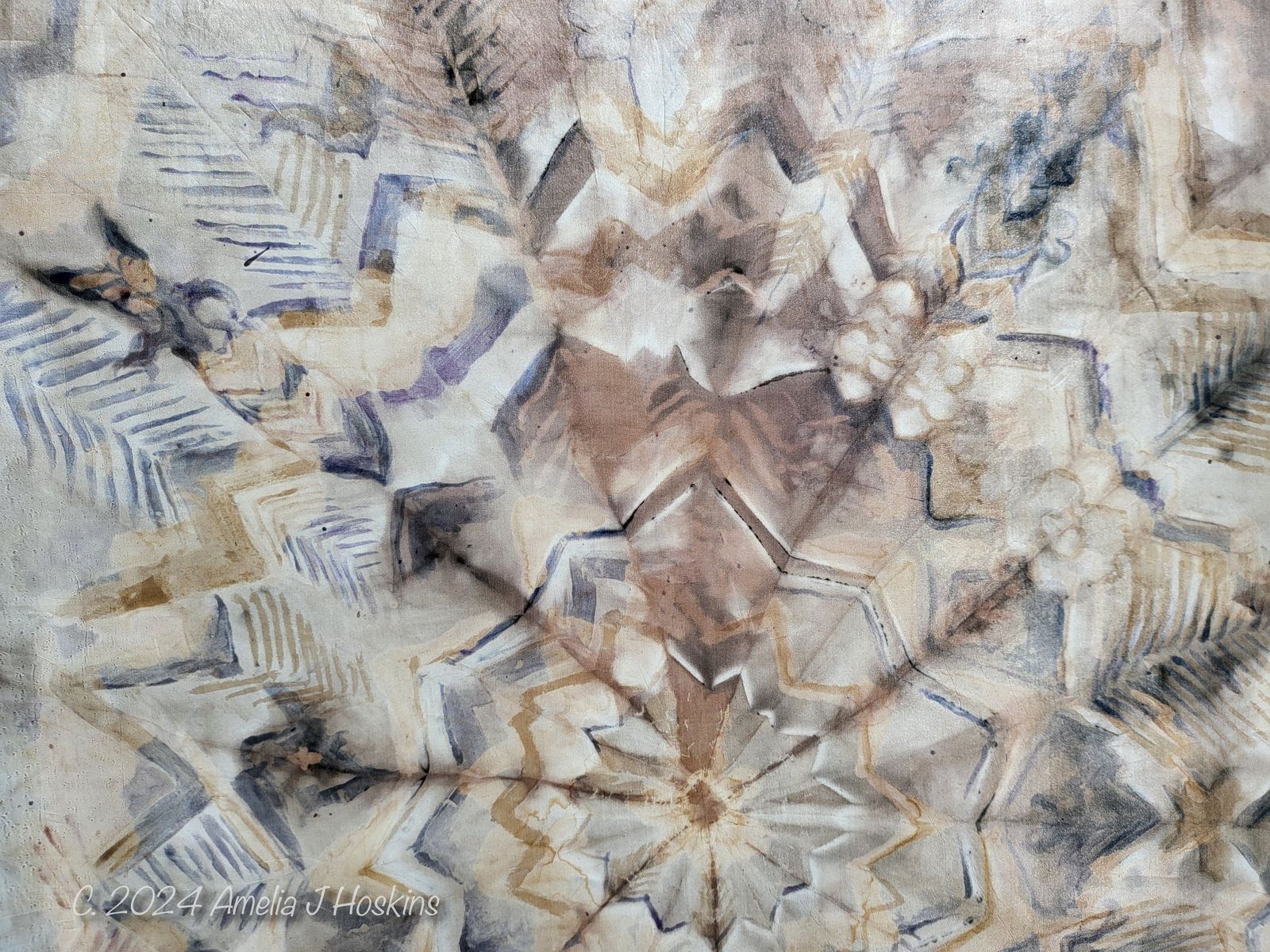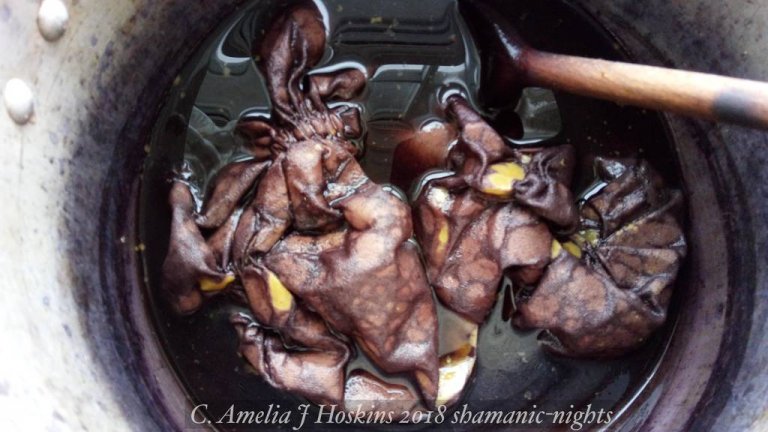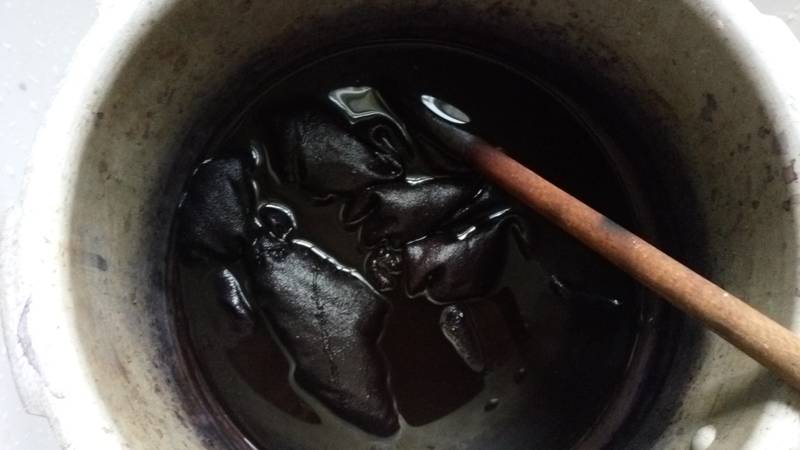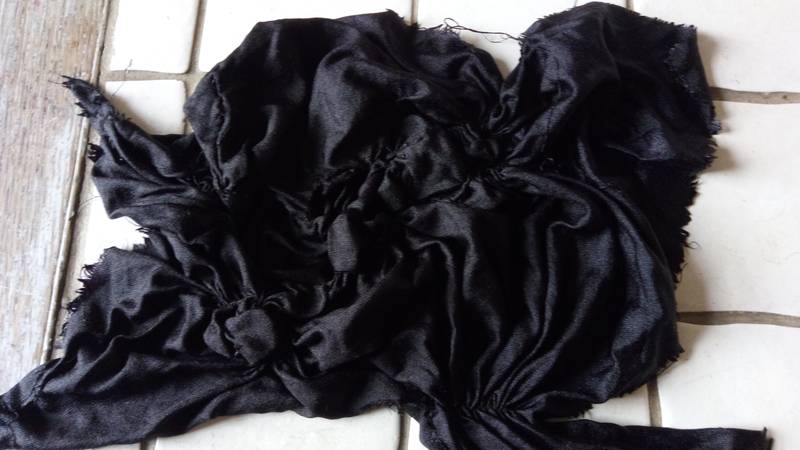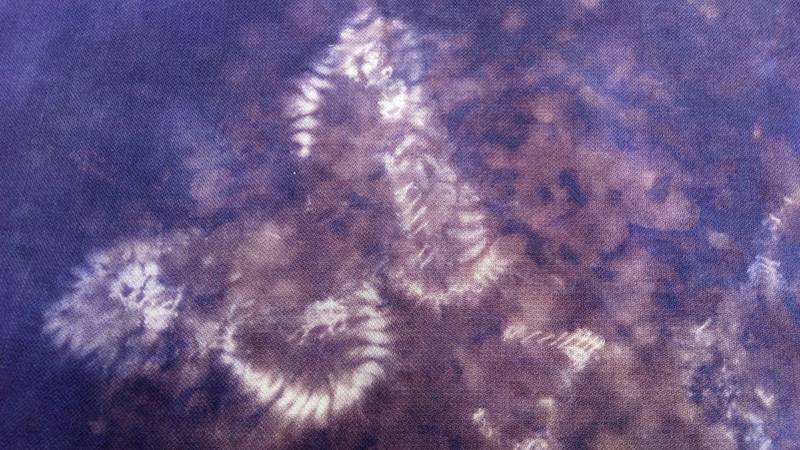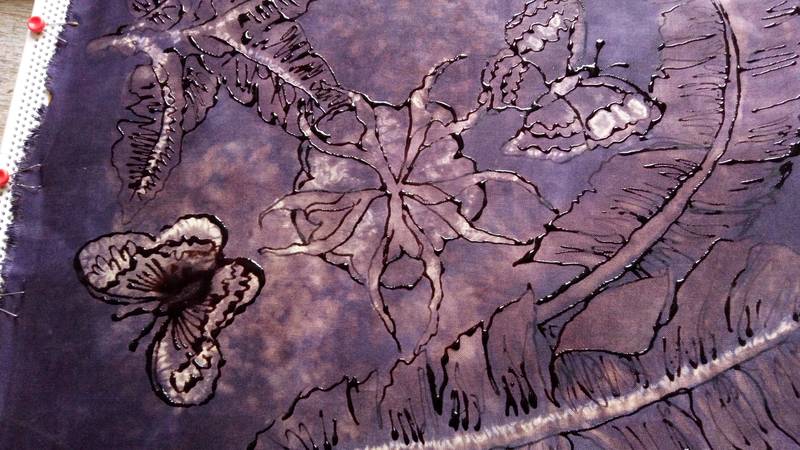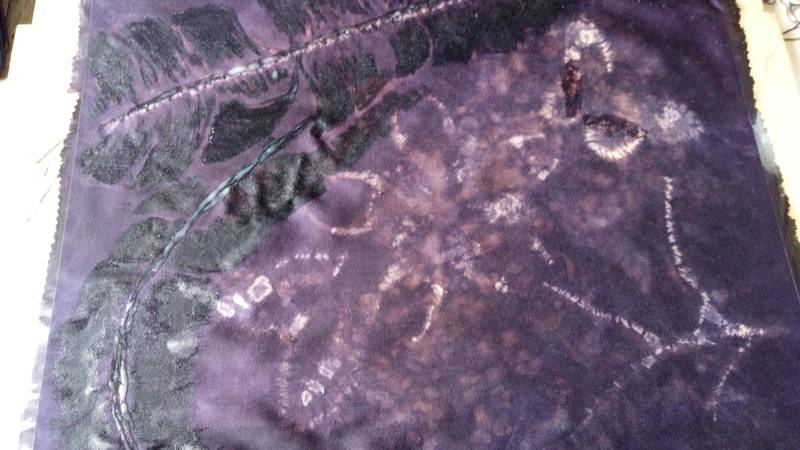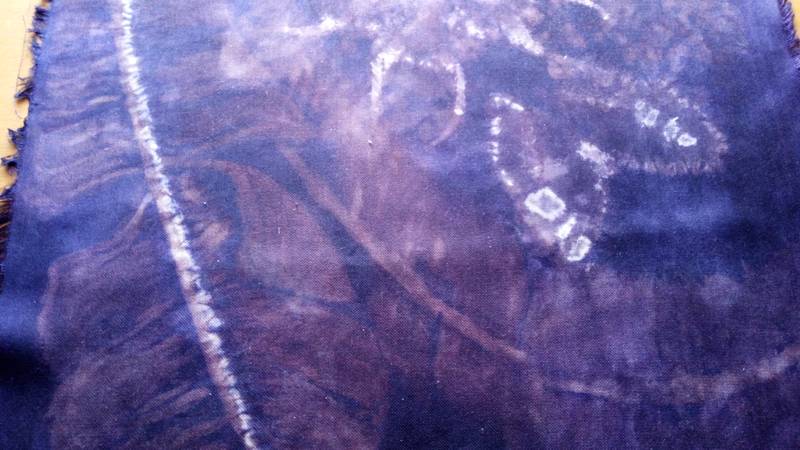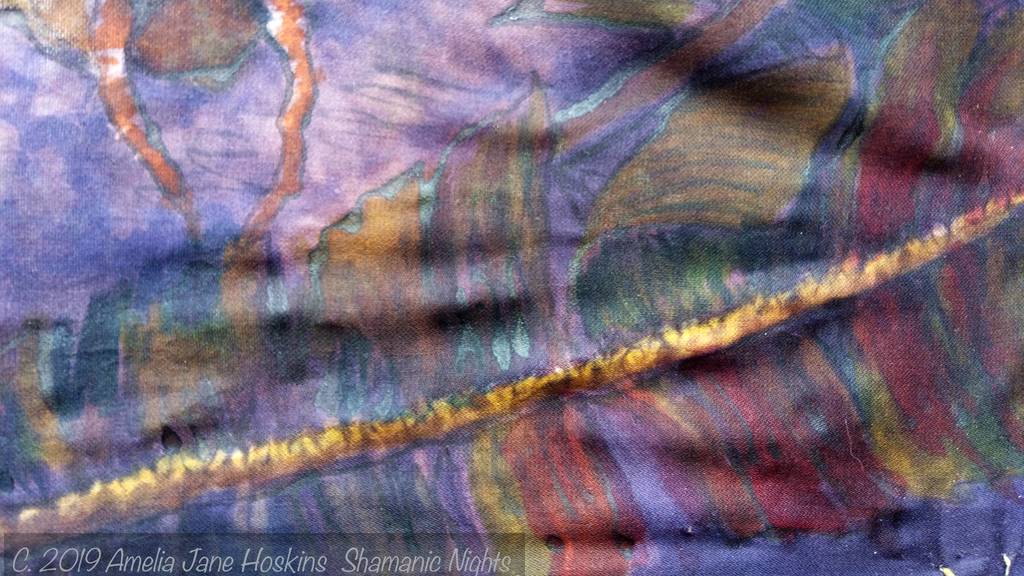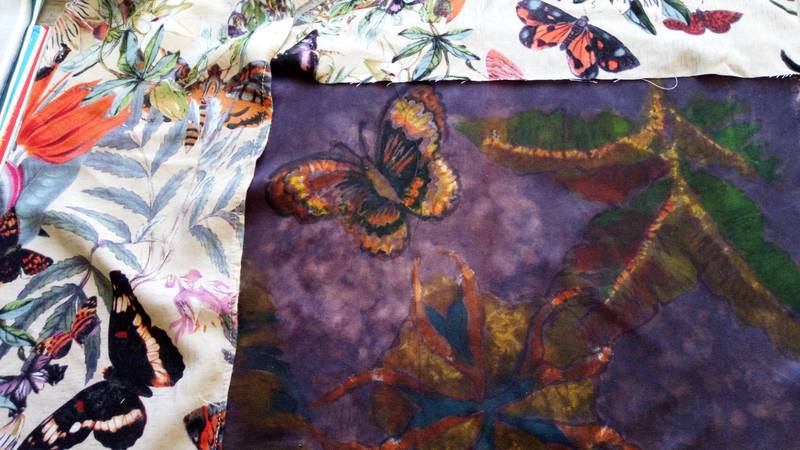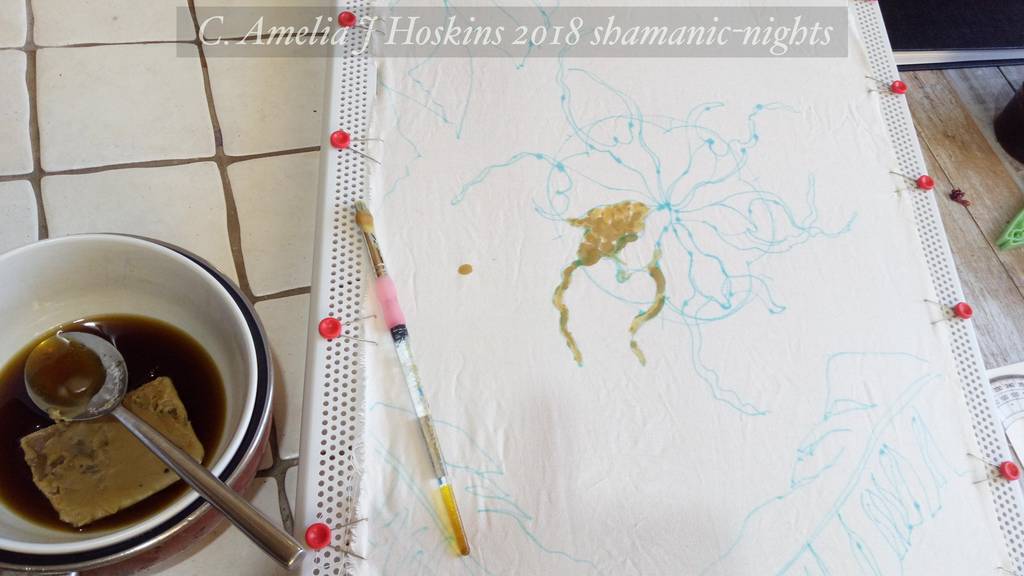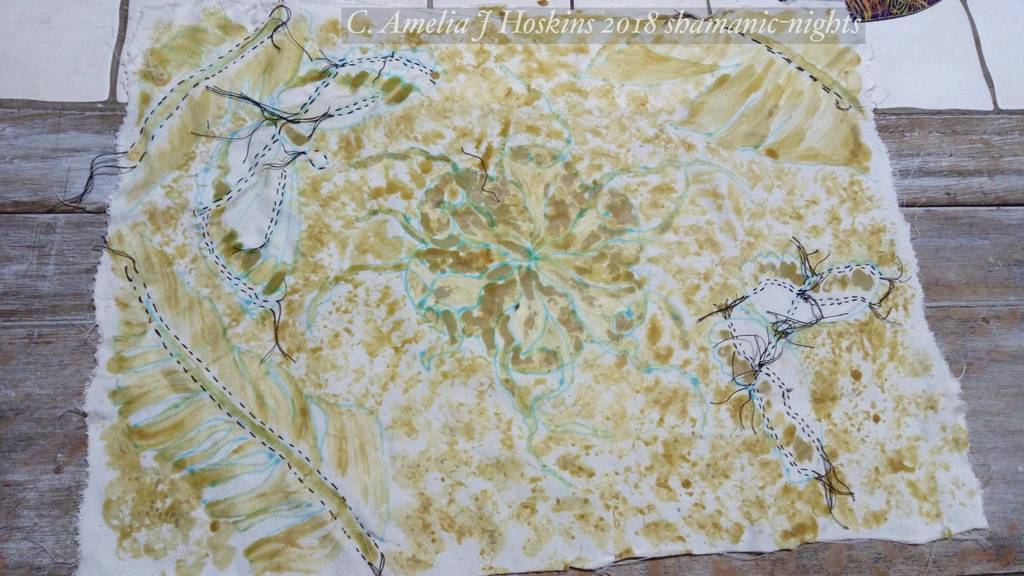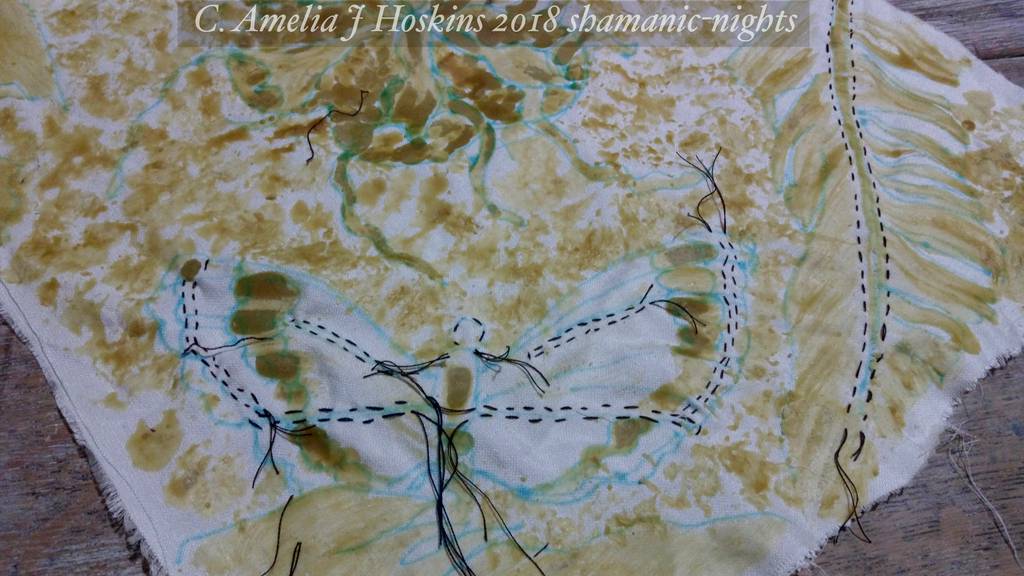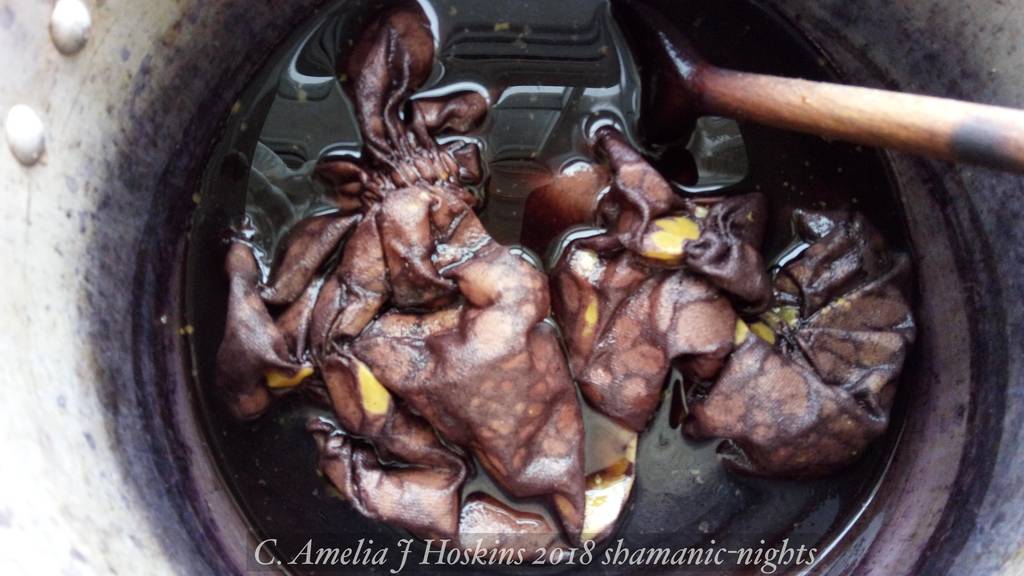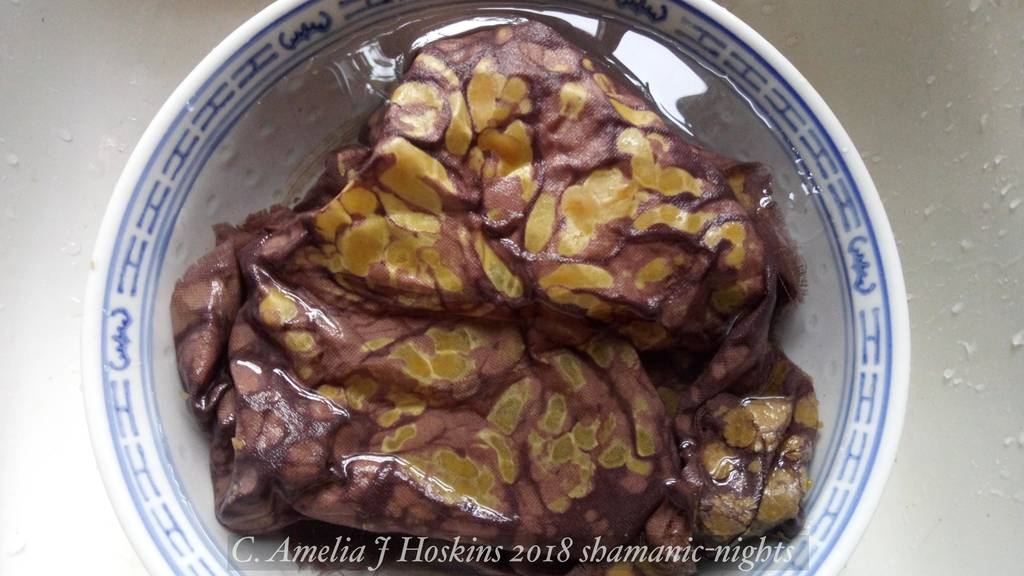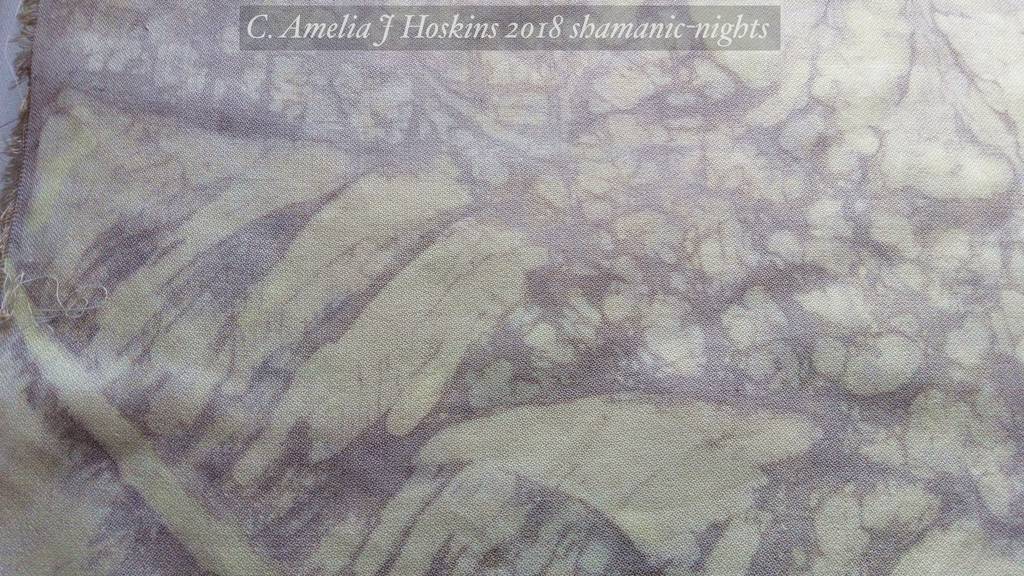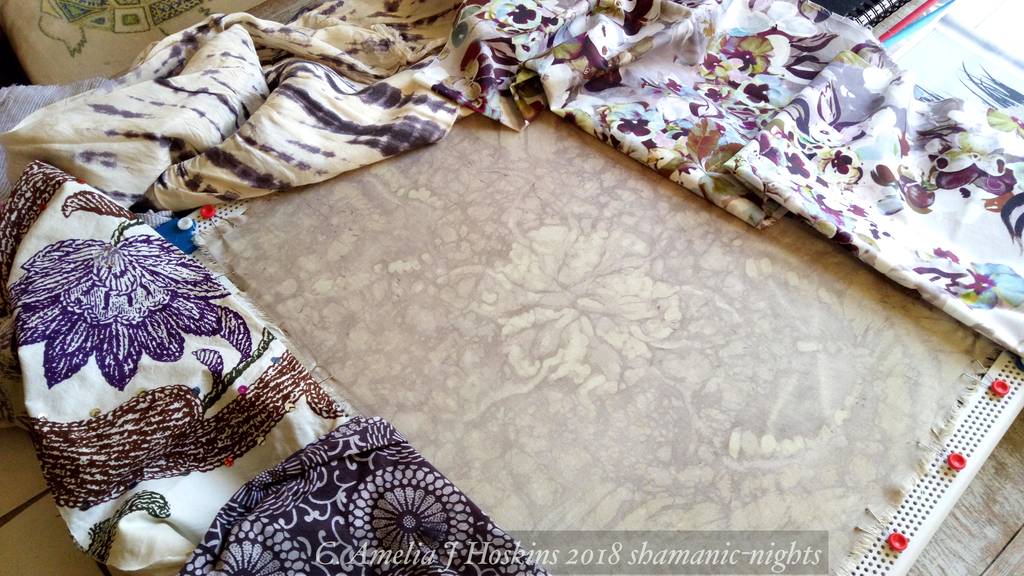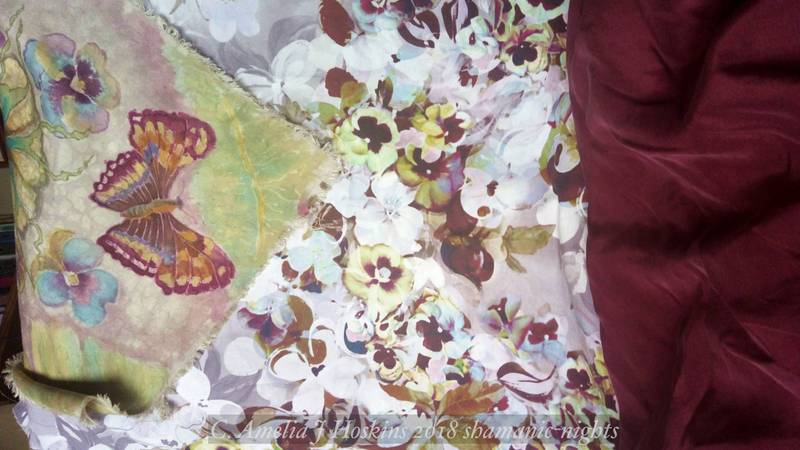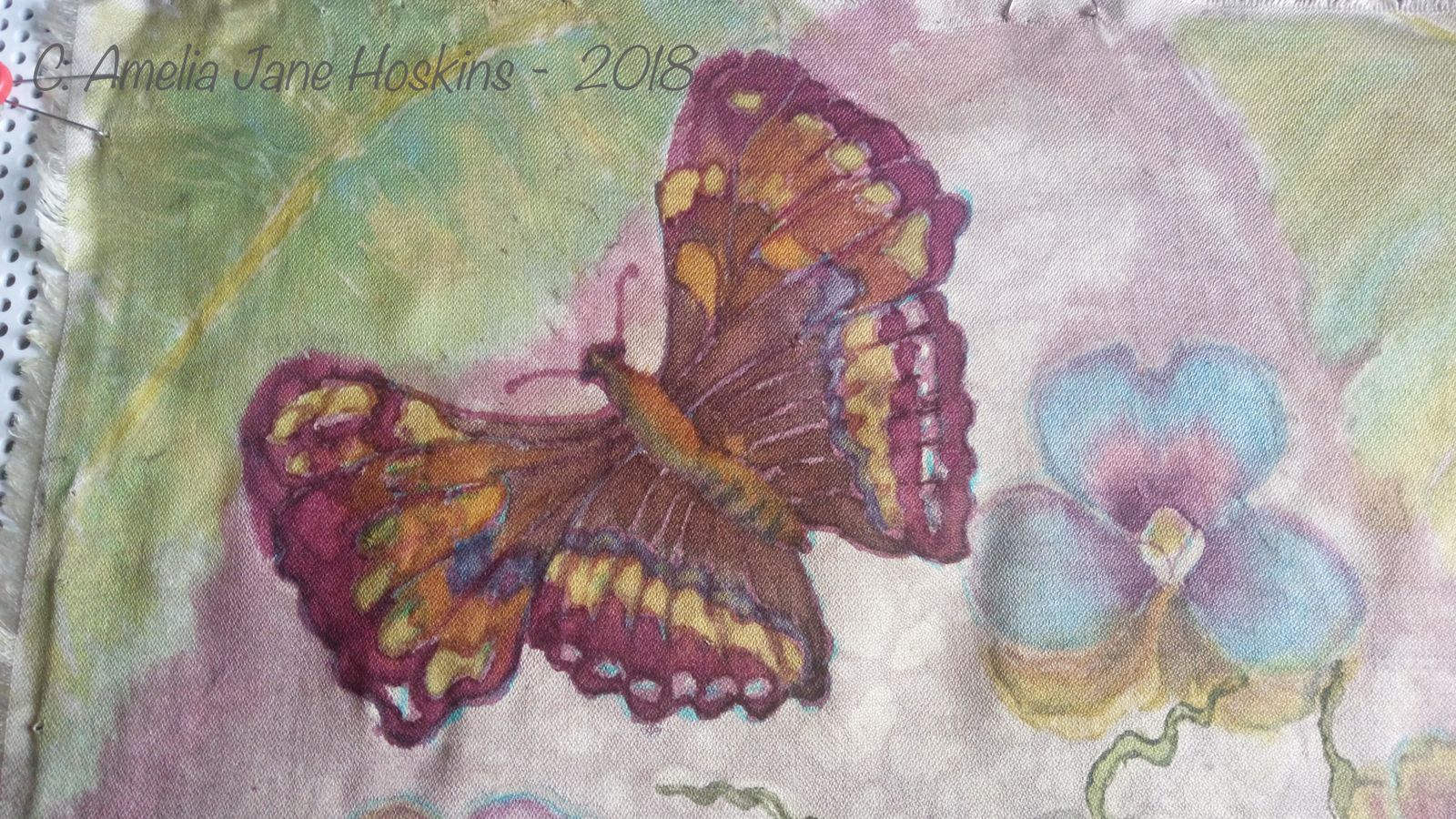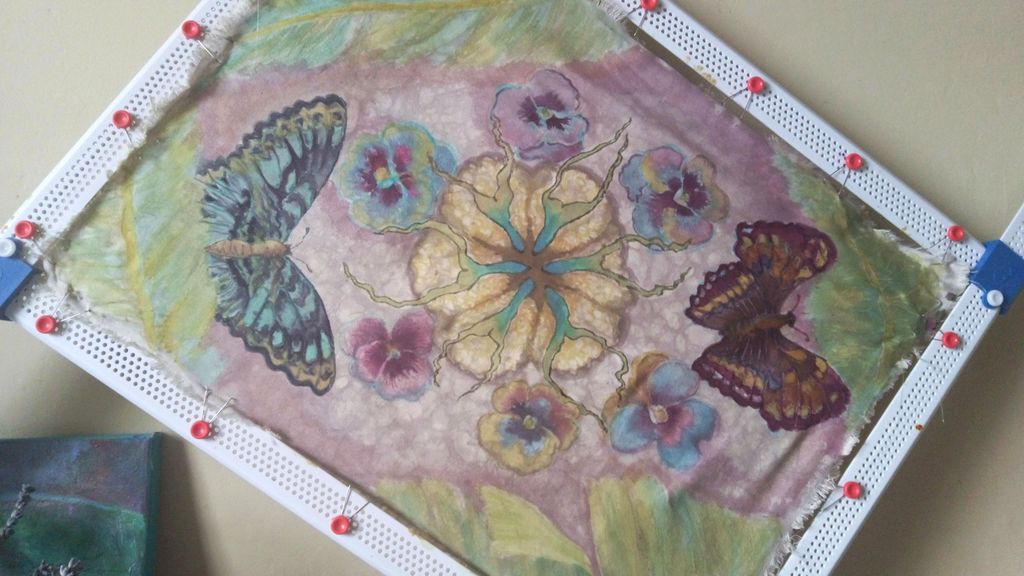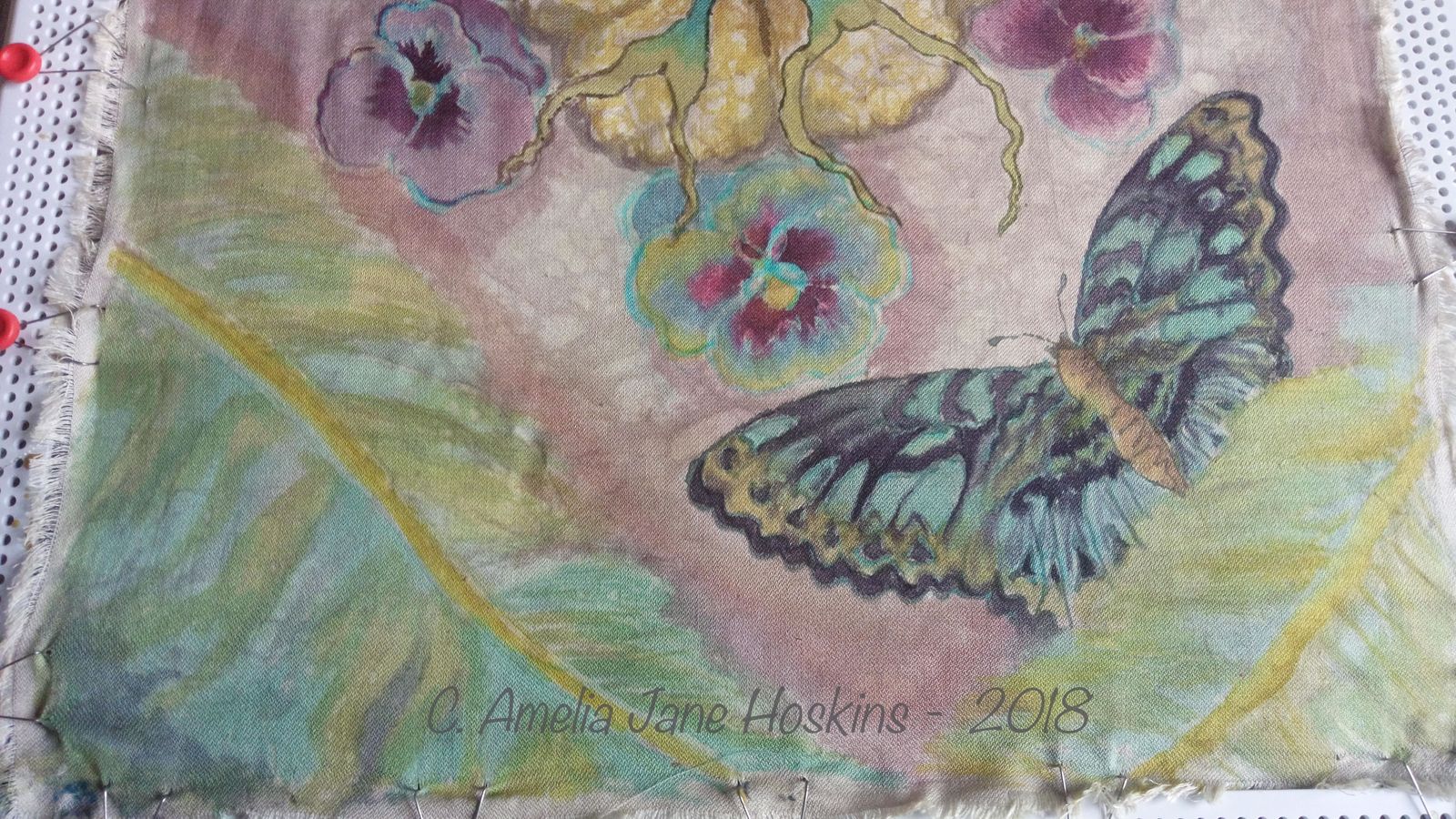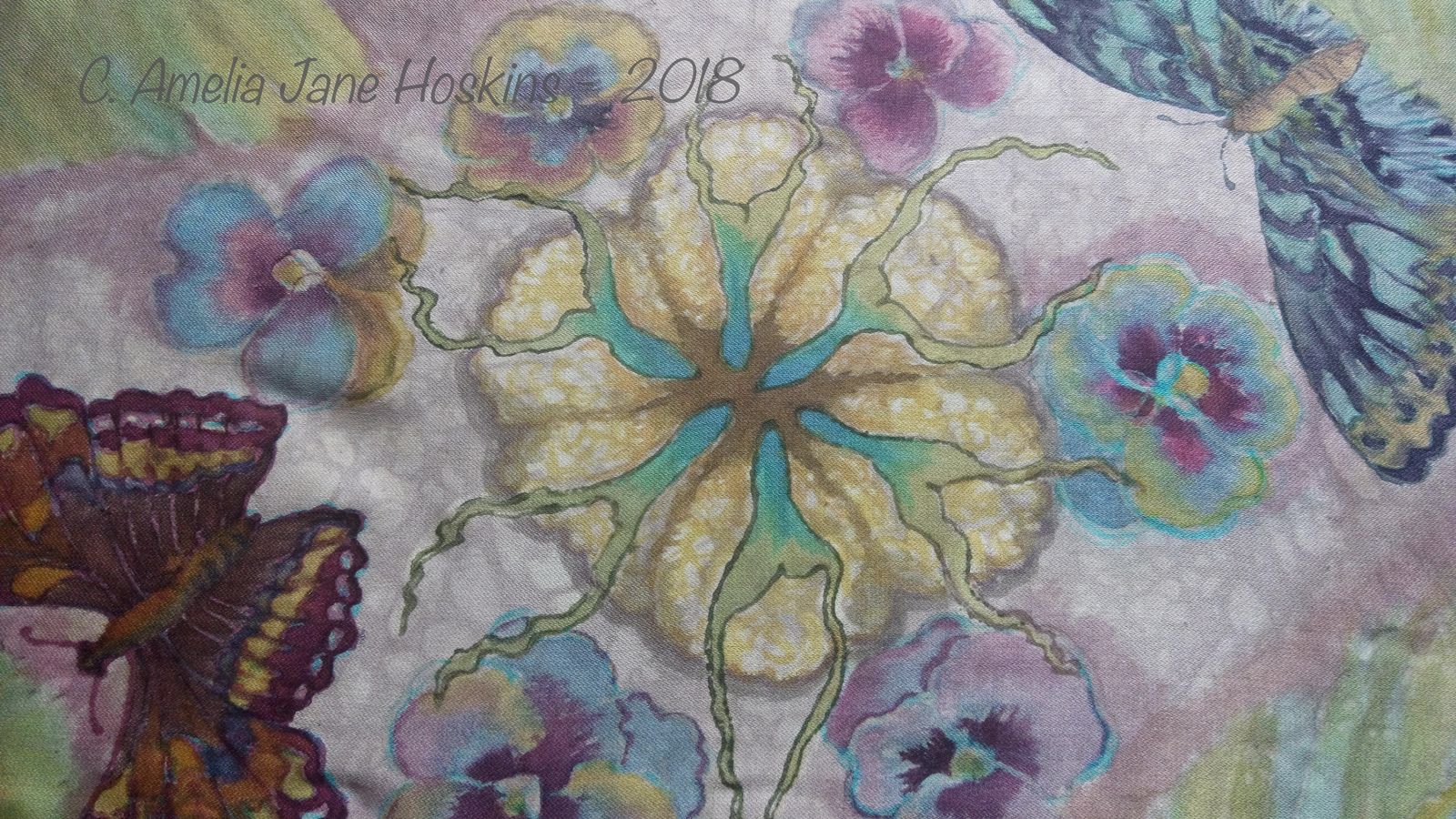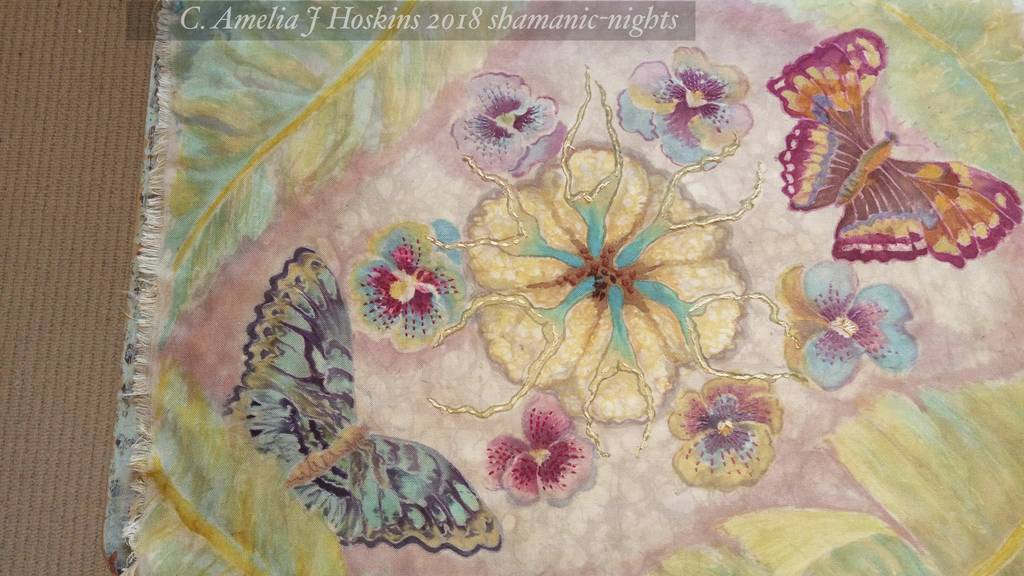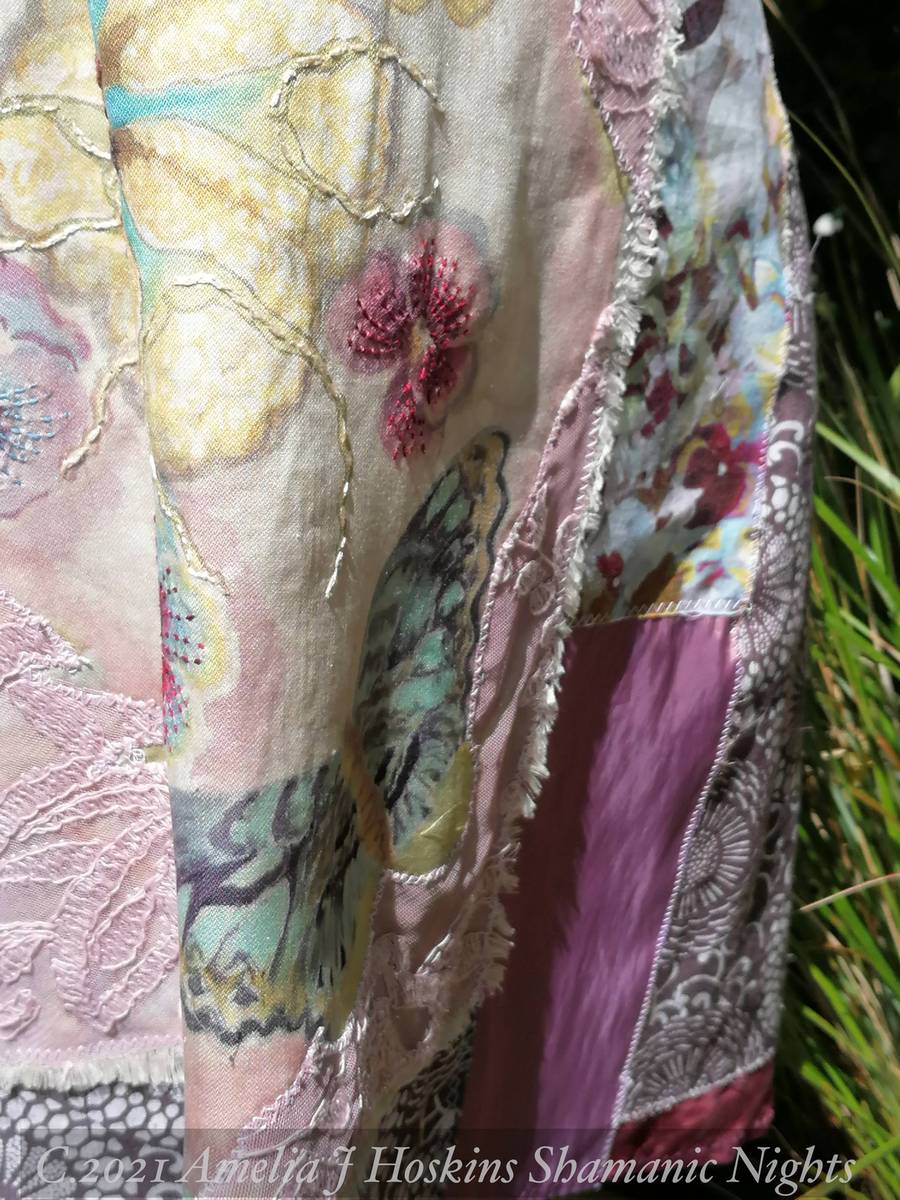Silk clamp dyed patterns
First experiments with clamp dyed patterns using natural dyes on Habotai silk
AVOCADO SKINS - STAR FLOWER PATTERN
AVOCADO SKINS - saved for some years, dried.
6 avocado seeds smashed open and added to simmer. ( they are beige inside and may contribute to the warm gold)
Large bulldog clamps placed at strategic angles after folding silk from the centre.
ONE process only for this RESULT dyed in Avocado Skins dye bath.
AVOCADO MULTI COLOUR STAR FLOWER
Varied tones are due to how tightly folds were clamped and how much silk on outside of folded length was exposed to the dye bath. Grey areas and black marks are due to non-steel screws in bulldog clips which started rusting in the pan! However, the grey they create adds another dimension to the colour tones.
2nd Experiment Piece: 1. APPLE BARK DYE BATH - Clamped result
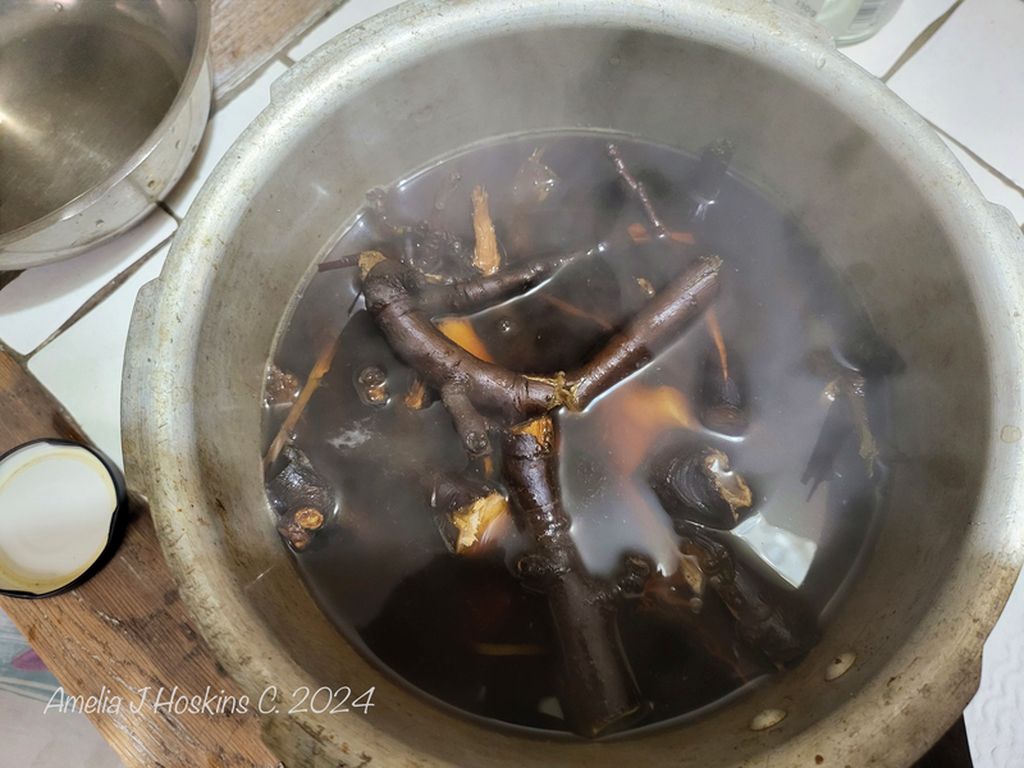
Apple branches and twigs
Cut and sawn into 3 - 4 inch pieces, soaked for a day or two, boiled and simmered, until submerging a small silk sample piece it is seen to absorb enough colour.
Silk clamped in dyebath
Premordanted with alum, silk has been folded in half, then quarter, then in triangles as concertina folds; then is clamped with large bulldog clips, which creates the final line shapes. Steeped in dye bath overnight.
Good result with white silk remaining. Clips are good length for square grid lines or hexagons. The apple bark dye bath produces a good 'old gold'.
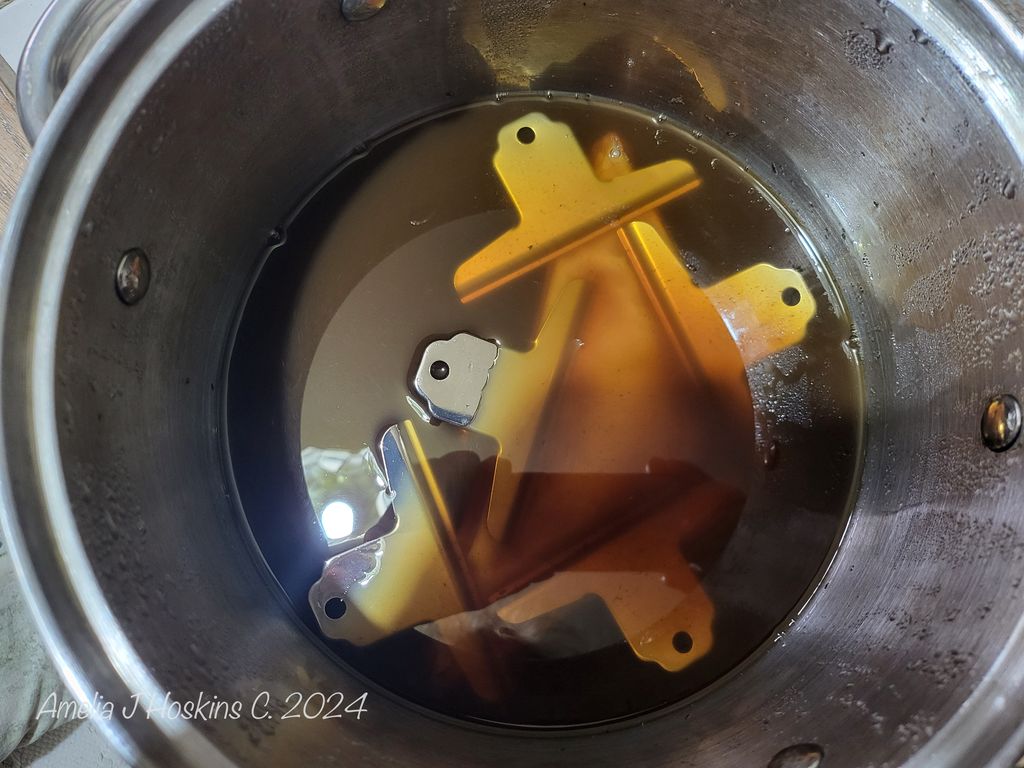
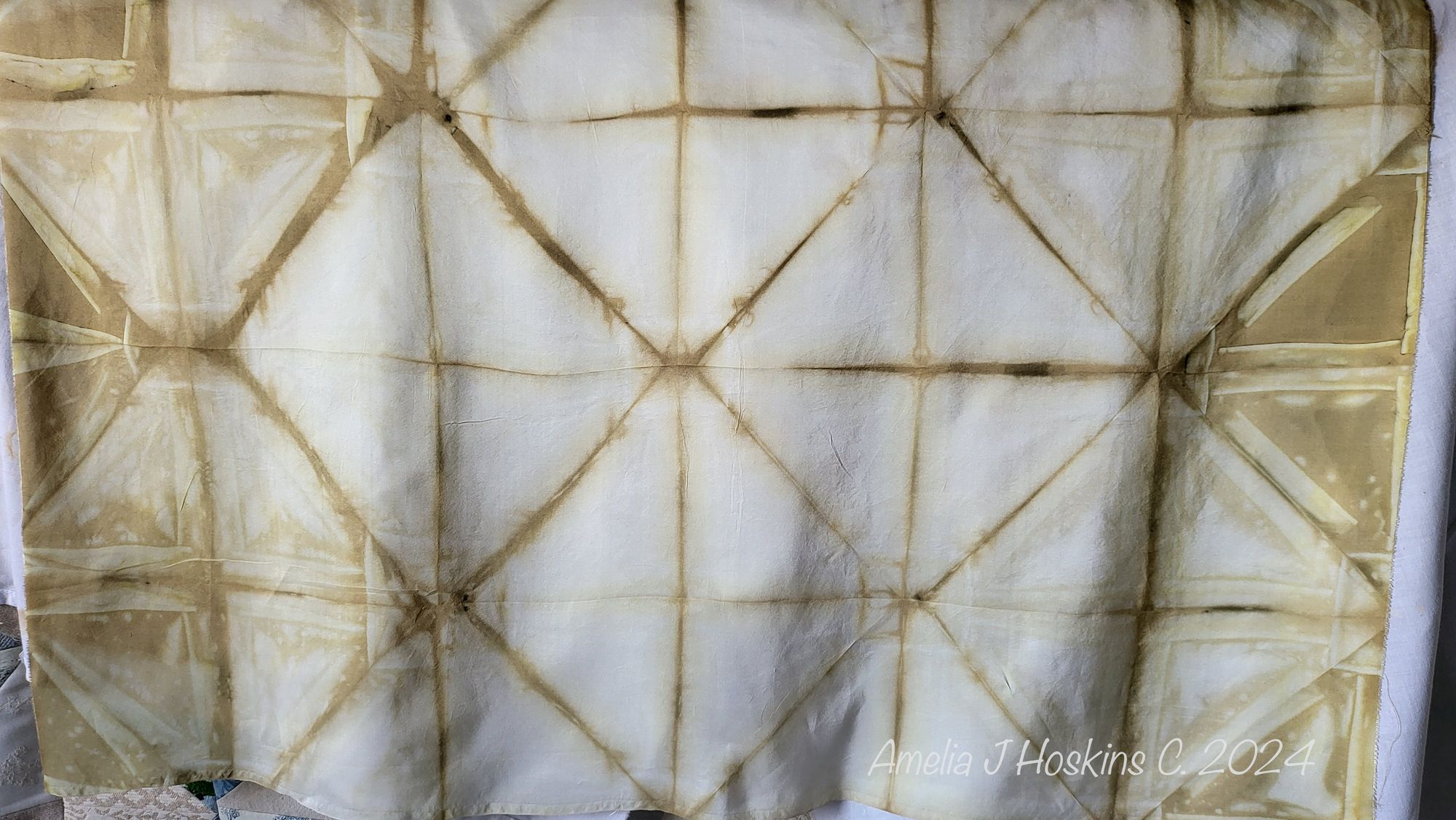
First APPLE BARK CLAMPED result of silk piece. Darker areas were exposed to dye bath. No cardboard or wood pieces were clamped with silk, hence the exposed areas.
Was subsequently over-died with avocado skins giving a pale gold over the white.
2. & 3. sequences - Starflower fold with alkanet (not shown, no photo as very pale) then over dyed with avocado skins
4. CLAMP DYE - tight folded in ALKANET
It helps keep rigid geometry if folds are gently ironed into place during clamping preparation. Pleased to see hexagons almost looking right.
SEQUENCE OF DYE BATHS AND CLAMPINGS
-
1 - Gold grid : clamp dyed in apple bark
-
2 - Very feint lilac star flower 1st clamp dyed alkanet (not shown)
-
3 - Over dyed in avocado skins to change the stark white
-
4 - Hexagons, clamp dyed with alkanet
- 5 - Final over dye below: ⬇
SAME PIECE - Sequence 5. FINAL CLAMP DYE - LOGWOOD
Colour and design is completely changed! Logwood result violet. Previous lines of apple bark and alkanet dyes are just visible against light.
Logwood fibres were soaked for 3-4 days, after initial boiling, and daily simmering. Firstly it turns red, then over the days turns violet-blue-black. Silk immediately takes on the colour. I left it in the cooled dye bath, clamped, about 6 hours, turning once. (Less time may have given a lilac, rather than such dark violet.)
Abstract design interest - Starburst (1) and Image like thunder and lightning landscape (2) , with possibilities for using as prints, or with extra digital image manipulation laid over. Quarters of the design have an interesting overlay of tones:
- Strong violet lines where clamps were
- Grid lines of apple bark clamping
- Beige background in places from avocado overdying
- Black in places where silk was exposed to logwood dye bath (overdyed apple bark)
DISCHARGE TESTS - colour results
- Lemon Juice (natural)
- Red-orange, turning orange. Good contrast option to work into design.
- Discharge paste (Jacquard commercial) full strength)
-
- Orange
-
- Decolourant (Jacquard commercial) mixed in water
- More pink than orange
- NOTE: single brush stroke gives less discharge and therefore a more muted result, like burnt violet, or muted burnt orange/sienna.
- Woad
- Looked blue, but steamed out to gold background
Final clamped LOGWOOD result photod over white cotton background
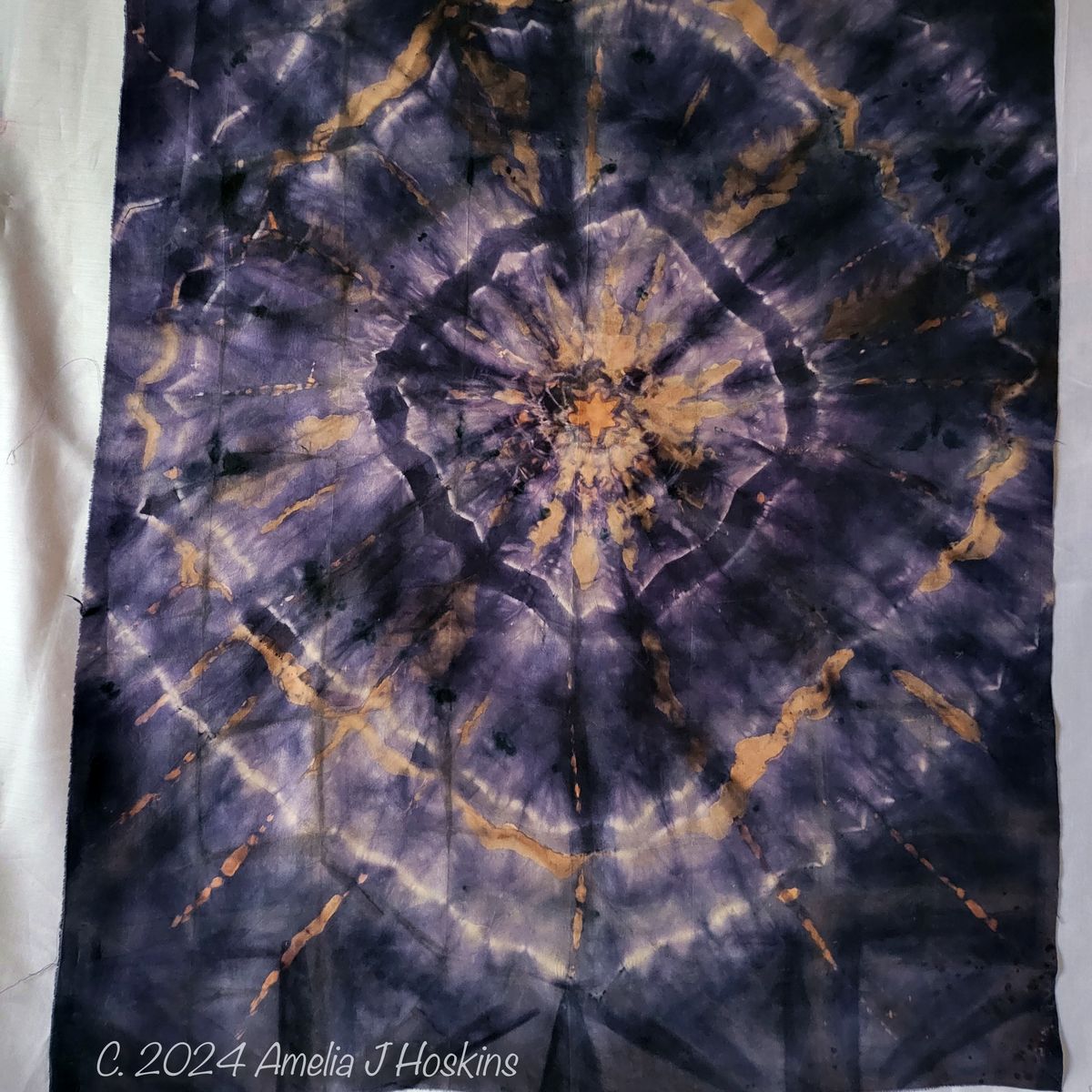
ALKANET STAR FLOWER - 3rd Clamp Experiment
ADDING MORE DYE TO SPARCE AREAS
Habotai silk stretched on frame ready to paint thickened dyes over. The quality of original clamp dyed result is somewhat spoiled by new additions by hand, but each silk piece is seen as a practice piece, a test bed.
- Alkanet mixed with Guar Gum to avoid dye run. Adding tiny bits at a time to jars of dye, until liquid starts to thicken. [Advice: do not add to boiling water, which seemed to cook it into a dough.]. Where applied thickly, yellow results, when overpainted with alkanet a third time.
- Alkanet applied to areas with none, or little dye from clamp process. With extra zig-zag areas filled.
- Logwood added to highlight some areas, to match the heavier initial dyed sections.
- After steaming, silk needed more washing out, to remove dye binder.
DYE TESTING
Priority purpose of these silks is to experiment with success rate with dye baths; resist techniques; and painting onto silk with dye bath liquids. Markings are not a major design concept, simply a means to use the dye paste and check for colour impregnation success or failure.
Lemon juice discharge was not practiced in this piece.
SHAPES AND LINES PAINTING
Painting in approximation of marks and areas: nothing copied precisely, just roughly similar in variations of markings which resulted over the whole piece. Zigzags, blurred areas between 'star' boundaries. Dark grey is logwood (possibly dulled, not purple, due to alkanet background, or due to addition of guar gum binder).

